HOME / BLOG / Travel Resources Traveling With Pets To Canada From The U.S. – Tips For Crossing The Border

Traveling With Pets To Canada From The U.S. – Tips For Crossing The Border
- By Amy at GoPetFriendly.com
- January 23, 2023
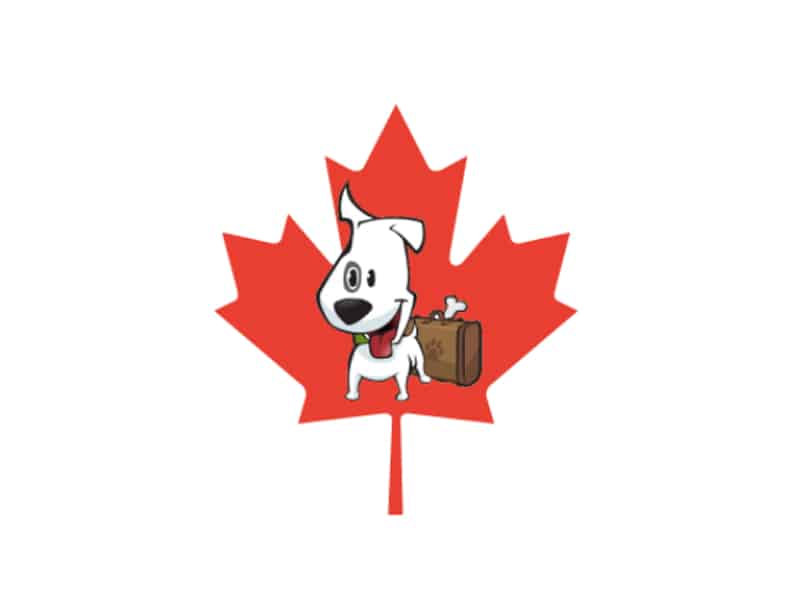
Traveling with your pets from the United States to Canada is easy! Learn everything you’ll need to know for a pet friendly road trip across the border.

The idea of traveling with your pets to Canada might make you nervous. But there’s really no need to worry! We’ve traveled across the border with our dogs many times over the years, and we’re happy to share the tricks we’ve learned.
Traveling To Canada With Pets For Commercial Reasons
Please note that this article is for people traveling with their pets for personal reasons, like a vacation or to visit friends and family. If your trip to Canada is for pet breeding, sale, or adoption purposes, refer to the rules regarding the commercial transportation of animals .
If you’re planning to travel to or through Ontario with a bully breed , please pay special attention to the “Breed Specific Legislation” section of this post .
Documents People Need To Travel Between The U.S. And Canada By Car
Most U.S. citizens can visit Canada for up to six months, as long as the right paperwork is presented at the border. When entering Canada or returning the the U.S., all travelers must provide acceptable identification and proof of citizenship. A passport is recommended because it proves both citizenship and identification.
Those who meet certain requirements can apply for Trusted Traveler Programs. Acceptance into these programs allows members to use expedited lanes at the U.S. airports and when crossing international borders. In addition, these additional forms of identification may also be acceptable:
- U.S. Passport Cards
- Enhanced Driver’s Licenses
- Trusted Traveler Cards (Global Entry*, NEXUS, SENTRI, or FAST)
- Military Identification Cards (for members of the U.S. armed forces on official orders)
- U.S. Merchant Mariner Document (for U.S. citizens on official maritime business)
Those traveling for work, school, or who are planning to move permanently will likely need a Canadian visa .

Traveling With Children
All minors entering Canada and returning to the U.S. must present evidence of citizenship, such as a passport or passport card at the border. Children younger than 16 who are traveling with both parents by land (not flying) can use their government-issued birth certificate as identification.
If you’re traveling with a child for whom you share custody, or you’re not the child’s parent or legal guardian, additional documents will be needed. You can learn more about those requirements on the US Customs and Border Protection and Canada Border Services Agency websites.

Pet Friendly Hotels In Canada
If you’ll be spending the night in Canada, you’ll also need to find a great pet friendly hotel ! Canada has many hotels that welcome pets, and it’s easy to find the perfect accommodations by searching online.

Documents Needed When Traveling With Dogs And Cats To Canada
There is no limit on the number of pets that can travel with you to Canada, as long as they are your personal pets. Before heading to the border with an animal, make sure you understand the Canadian import and travel requirements.
The Canadian Food Inspection Agency sets the policies for traveling with your pets to Canada. Their officers inspect and can refuse entry , confiscate, or detain an animal if:
- it is undeclared, including family pets
- you do not have the necessary permits/certificates
- it is suspected of being sick or infected with a pest or disease
- the animal is transported in a non-humane way and not kept safe from harm and injury
Proof Of Rabies Vaccination
If you’re traveling to Canada from the United States, Mexico, or any other country not considered rabies-free with your cat or dog that is at least three months old, you’ll need a valid rabies vaccination certificate. For cats and dogs younger than three months, proof of age must be provided upon request.
The rabies vaccination certificate must meet these requirements:
- be legibly written in English or French
- have the name and signature of the licensed veterinarian that issued the certificate and the date it was signed
- identify the animal by age, breed, sex, color/markings, weight, and microchip/tattoo number, if applicable
- state that the animal is vaccinated against rabies
- indicate the date of vaccination
- indicate the trade name and the serial number of the licensed vaccine
- specify the duration of immunity (otherwise, it will be considered valid for 1 year from the date of vaccination)
Pets traveling to Canada are not quarantined upon arrival from any country. Additionally, Canada does not require a vaccination waiting period. Pets can travel to Canada immediately after he or she receives the rabies vaccination.
READ MORE ⇒ Planning A Pet Friendly Road Trip
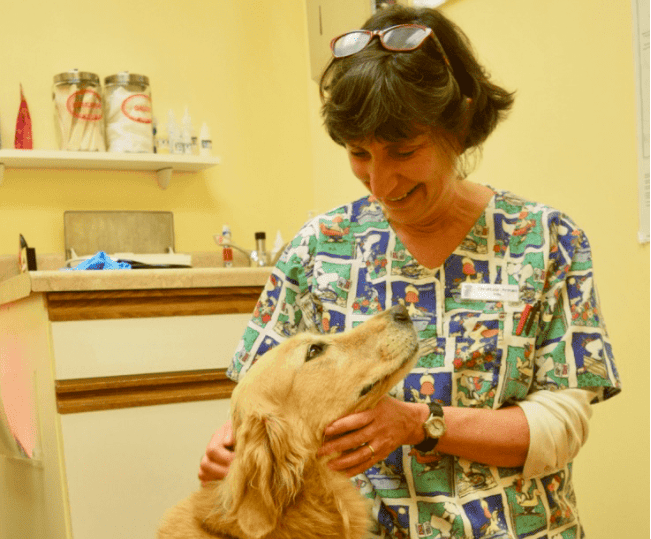
What if you don’t have a valid rabies certificate?
Arriving at the Canadian border without a proper rabies certificate likely means you’ll be jumping through some additional hoops.
First, you’ll have to have your dog vaccinated for rabies within two weeks of your arrival. Then you’ll have to take the vaccination record to a Canadian Food Inspection Agency office .
In addition to the vaccination cost, you’ll incur administrative fees for each animal. These fees are due when you cross the border.

What if your pet can’t be vaccinated for rabies?
If your dog or cat can’t be vaccinated for rabies due to his health, you can apply for an exemption to the rabies certificate requirement. Applications, submitted in writing to the National Centre for Permissions , must include a letter from your veterinarian stating the specific condition preventing the vaccination of your pet. You also have to include the results of a Rabies Neutralising Antibody Titre Test meeting the minimum titre requirements.
Upon approval, your pet will still need an inspection by a CFIA veterinarian when you arrive in Canada. You’re responsible for making arrangements for the inspection at your port of entry before the animal travels.
Health Certificate When Entering Canada
The Canada Border Services Agency inspects all pets traveling to Canada to ensure the animal’s rabies vaccination is current and the animal description matches. The agents also visually inspect the animal to ensure that there are no visible signs of illness or injury.
It is possible for the border agents to refer any animal crossing the border for secondary inspection. But as long as your dog is healthy, this is unlikely to happen.
Generally, health certificates are not necessary when traveling with your pets to Canada. But, if a pet appears to be ill, the border agents can request a health certificate from a veterinarian. Their primary concern is that the pet’s condition is not contagious.
If you’re traveling with a pet with an obvious health condition, we recommend getting a health certificate from their vet prior to your trip. It’s a bit of a hassle, but it could help you avoid a delay border!
Pets flying to Canada must also meet the requirements of the airline on which they’ll be traveling. Most airlines require that all pets have a current health certificate.
READ MORE ⇒ Tips for Traveling to Canada with a Cat

Transport Pets Safely
Canada has strong regulations in place to help protect all animals from injury and suffering during transport. To ensure your pets are safe while traveling, follow these suggestions:
Contain your pet – Buckle up animals that could distract the driver in a seat belt harness or secured carrier. In addition, pets should not roam freely in the back of pick-up trucks, and must not be exposed in any way to flying debris.
Watch the weather – Don’t leave animals in parked vehicles for long periods of time, especially in hot or cold weather. If you must leave your pet unattended in a vehicle for a short period of time, ensure it has fresh water and leave windows open a little on either side of the vehicle to create a cross-breeze.
Provide food, water, and rest – On long trips, make sure your pet has food and water and that you make regular stops so it can rest or get out and walk around.
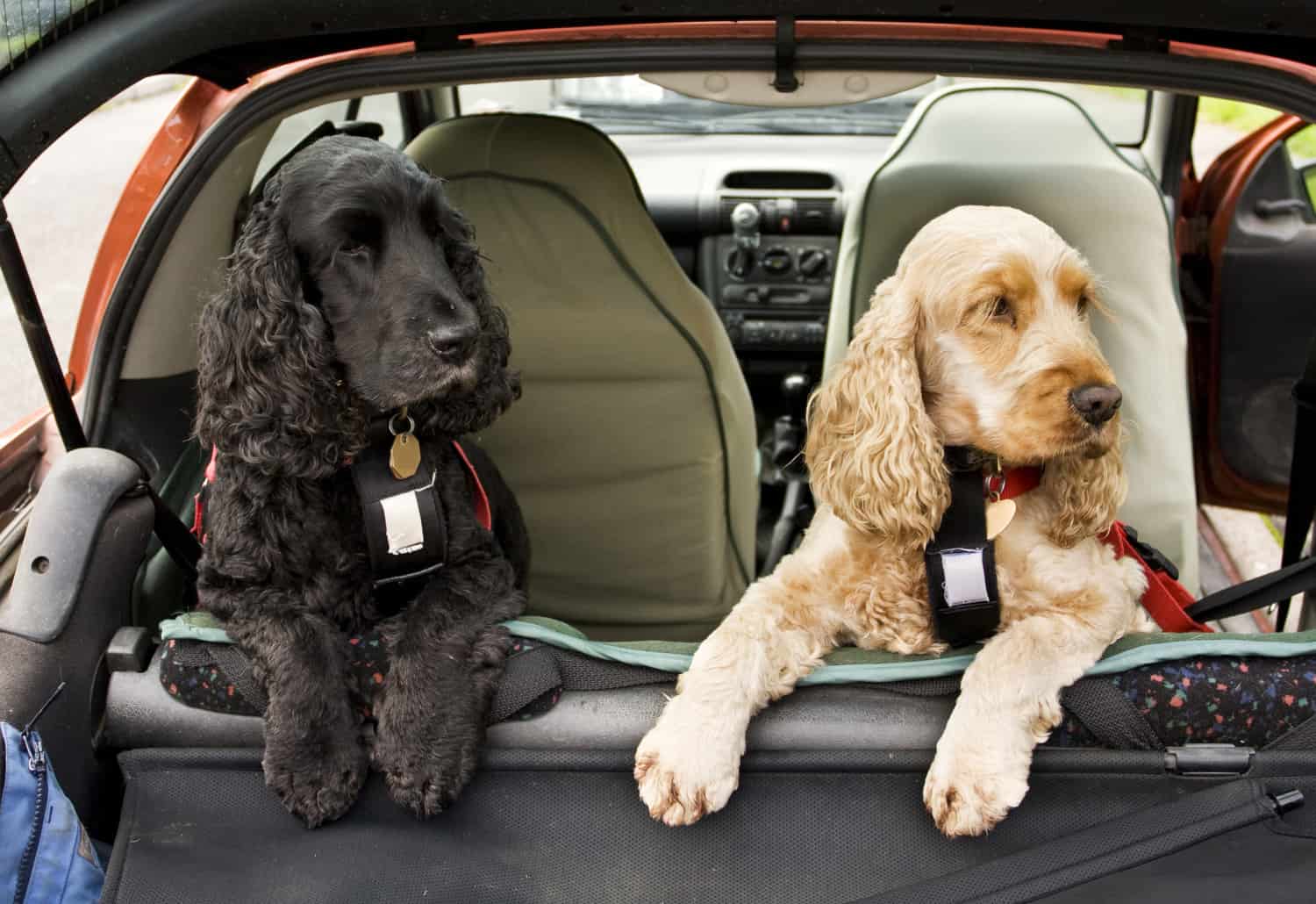
Taking Pet Food And Treats Into Canada
Visitors traveling with pets to Canada from the United States can bring up to 20 kg (44 pounds) of pet food and treats into Canada for their personal use. This is the total amount of pet food and treats allowed, regardless of the number of pets traveling with you. In addition, the pet food and treats must meet ALL of the following requirements:
- Pet food and treats must be from the United States, commercially packaged, and unopened.
- All pet food and treats must be in the possession of the traveler at the time of entry.
- The animal that will eat the products must accompany the traveler at the time of entry.
- Any pet food and treats imported into Canada by the traveler must be fed only to the animal that accompanied the traveler into the country.
For longer trips, or if you’re traveling through Canada to or from Alaska, consider taking a dehydrated pet food with you. We love The Honest Kitchen dog food and it’s great for traveling because a 10 pound box makes 40 pounds of food!
READ MORE ⇒ What To Pack For Your Dog For An Overnight Trip
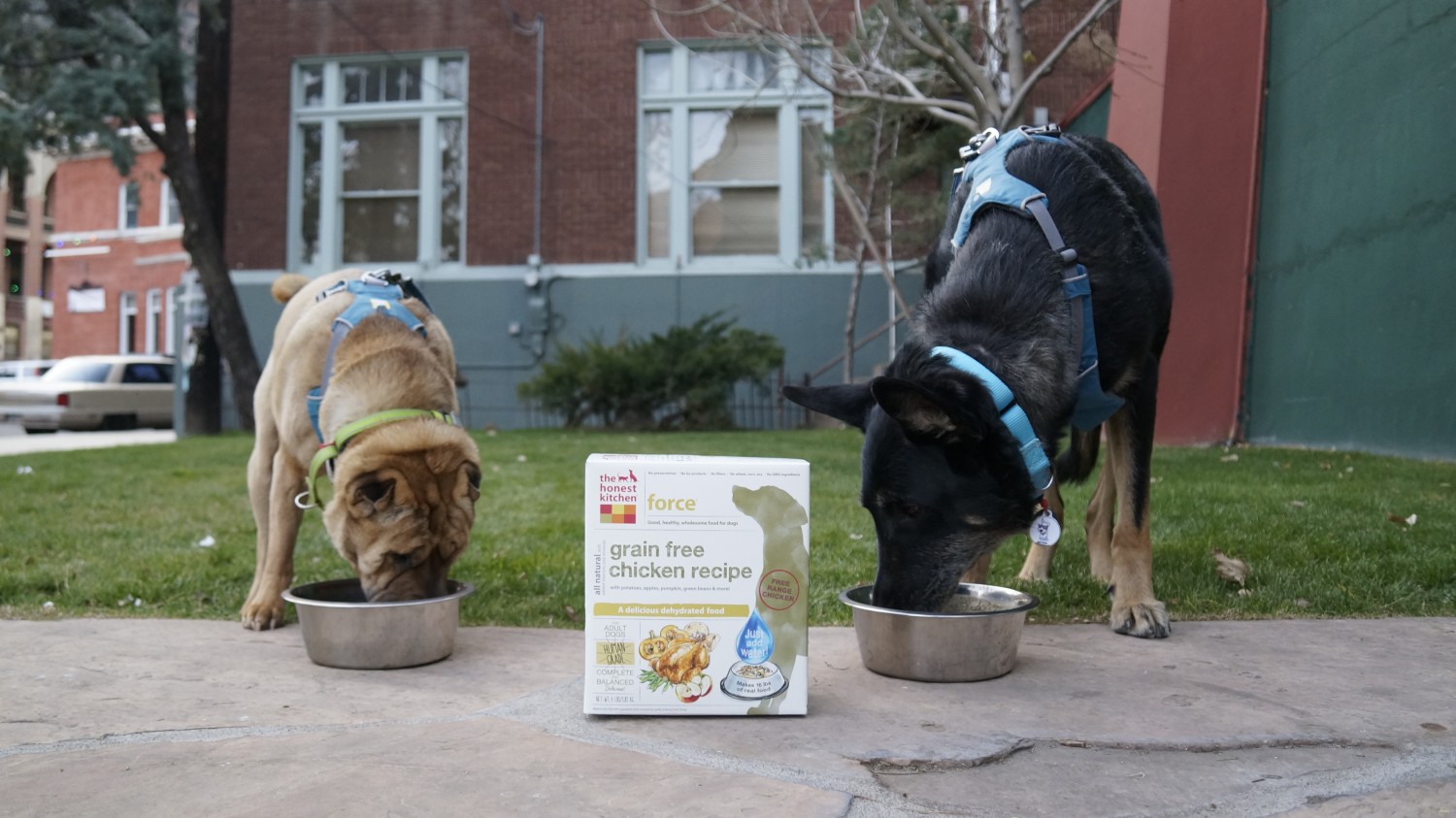
No Requirement For Microchips or Tattoos
Canada does not require a microchip or tattoo identification for pet dogs and cats. However, some type of permanent identification can help your pet get home if they get lost.
Traveling With Other Types Of Pets To Canada
Not everyone travels with cats and dogs. Here are the rules for traveling to Canada with less common pets:
Amphibians and Reptiles
Imports of amphibians and reptiles (other than turtles and tortoises) are controlled by the Convention on International Trade in Endangered Species of Wild Fauna and Flora and/or other restrictions under the Wild Animal and Plant Protection and Regulations of International and Interprovincial Trade Act , which are administered by the Canadian Wildlife Service. If you plan to bring an amphibian or reptile to Canada, you should contact the Canadian Wildlife Service .
Birds are considered pets for Canadian import purposes if they are personally owned and cared for, and are a species commonly known as caged birds such as psittacines (birds in the parrot family), song birds, toucans, canaries, finches, cardinals, etc.
To travel with your pet bird to Canada, you must meet all of the following requirements:
- Your bird must accompany you or a member of your immediate family.
- The bird must appear healthy when inspected at the port of entry.
- the bird was in your possession for the 90 day period preceding the date of importation and wasn’t in contact with any other birds during that time
- the bird is your personal pet and won’t be sold
- You or any member of your family must not have imported birds into Canada under the pet bird provision in the past 90 days.
In cases of a disease outbreak, an Export Veterinary Certificate from the United States might be required. Check the Canadian Food Inspection Agency for more information.

Ferrets can only travel to Canada from the United States. They can cross the border without an import permit if they have a valid rabies vaccination certificate. The ferret must have received the rabies vaccination in the 12-month period preceding the date of import. Ferrets less than 3 months old are not subject to any import restrictions.
Pet rabbits from the United States do not require an import permit or health certificate to enter Canada. When you arrive at the border, present your rabbit to Canada Border Services Agency staff for inspection. Also provide proof that the rabbit has lived in the United States for the 60 days prior to entering Canada.
Most pet rodents, including chinchillas, guinea pigs, hamsters, mice, and rats can travel to Canada without an import permit or health certificate. Border agents may inspection your pets related to the humane transport of animals regulations.
There are import restrictions for certain (or specific) pet rodents, including prairie dogs, gambian pouch rats, or squirrels from most countries; and all rodents from Africa.

Turtles and Tortoises
Turtles and tortoises arriving from all countries require an import permit. And the animals must have been in your personal possession in the country of origin and accompany you to Canada. You should submit the application for permit to import at least 30 days before your arrival.
Breed Specific Legislation In Canada
If your Canadian road trip will take you to or through the Province of Ontario, and you’re the owner of a bully breed, please read this information carefully. You might need to change your route.
Province of Ontario
Ontario has an ugly Breed Specific Law that bans “pitbull-type” dogs from the province. Police and animal control officers can search for and seize any dog deemed to be a “pit bull-type” based on visual inspection.
If the authorities determine the dog is a “pit bull-type,” the dog is euthanized, even if it didn’t break any other law. Here is a summary of the law from Ontario’s Ministry of the Attorney General.
READ MORE ⇒ Tips for Traveling with Pit Bulls

There are no exceptions to this law for tourists traveling with their pets. So, if you have a pit bull, please avoid Ontario. And if you have a dog that could be mistaken for a pit bull, carry documents proving your dog’s pedigree when traveling in Ontario.
Throughout the rest of Canada, there are municipalities with breed restrictions and bans. Plan to avoid them. Visit the Justice for Bullies website for a map of locations with breed specific laws.
Pet Friendly Destination Ideas In Canada
Canada has some gorgeous pet friendly vacation destinations to consider. Here are a few of our favorites!
The Complete Pet Friendly Guide To Jasper National Park

Dog Friendly Hike at Lake Louise

A Pet Friendly Guide To Banff National Park
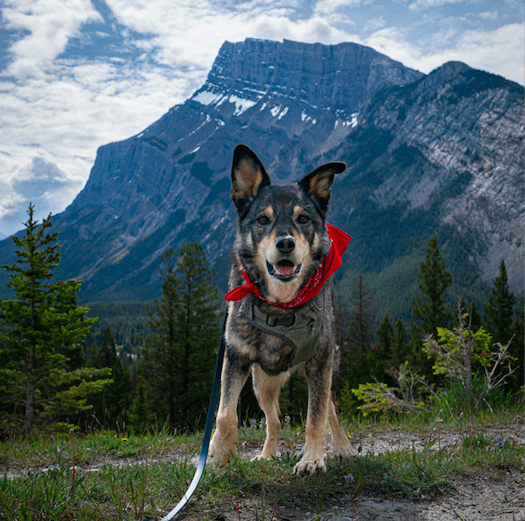
Dog Friendly Road Trip In British Columbia: Vancouver To Kamloops And Back

Vancouver’s Top 5 Dog Friendly Things To Do

Documents Needed When Returning To The United States With Pets
Rabies certificates not required for cats and dogs traveling from canada to the united states.
All pets must appear healthy to enter the United States. Cats, regardless of where they’re arriving from, don’t need proof of rabies vaccination to enter the United States. Things are more complicated for dogs.
After October 14, 2021, dogs coming from c ounties considered high-risk for importing rabies must have CDC Dog Import Permits and can only enter the country at approved ports of entry .
Luckily, Canada isn’t a high-risk country on the CDC website . So, dogs traveling from Canada to the United States don’t need to present a rabies vaccination certificate or other paperwork. Still, the CDC recommends all dogs receive a rabies vaccination.
Also keep in mind that some states require vaccination of cats and dogs for rabies. So it is a good idea to check with state and local health authorities at your final destination.

Health Certificate When Entering the United States
Like in Canada, if your pet is healthy he won’t need a health certificate to come into the U.S. However, if there could be any question about your pet’s health, we recommend getting a health certificate from a veterinarian that states his condition is not contagious.
READ MORE ⇒ What You Should Know About Emergency Vets Before You Need One
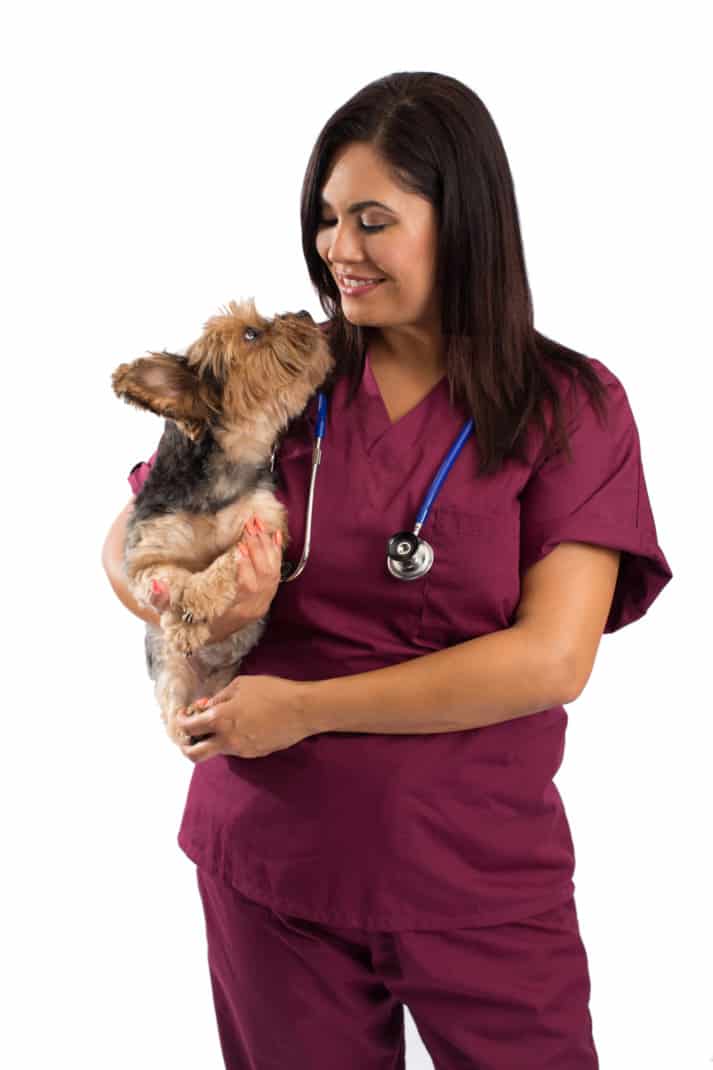
Taking Pet Food And Treats Into The United States
When driving from Canada to the United States, you can bring up to 50 pounds of pet food purchased in Canada. The food must meet the following requirements :
- Does not contain lamb, sheep, or goat meat
- Shelf-stable (not needing refrigeration) and sealed (never opened) containers of pet food must in commercial packaging
- Labels on the packaging must clearly list the ingredients and country of origin
- Manufactured in Canada or the United States only
Pet foods containing sun-dried, freeze-dried, or raw products cannot be imported for personal use.
In Real Life
The requirements are pretty straight forward. But if you’re still losing sleep, here’s what it’s really like to cross the border with your pets .

We hope this summary makes it easier for your to plan your pet friendly trip Canada! For more ideas on places to visit, be sure to check our pet friendly destination guides .
Hi. I am travelling with my golden retriever for the 1st time to Canada. I read in one of your blogs that dog food containing lamb is not permissible when returning to USA. My dog has food allergies, and his food contains lamb. can you share some more information on that. Thanks
Hi Bhagyashree, and thanks for your note! First, it’s very unlikely that your dog’s food will be checked by the border agents. That being said, it’s always better to be prepared. So I’d recommend buying the smallest package needed to feed your dog while you’re traveling. Leave the package closed for when you cross the border into Canada and open it once you’ve arrived. Hopefully your dog eats most of the package during your visit. If there is any left, and you’re checked by the US border agents when you return, any pet food or treats that are in an opened bag or container will have to be disposed of. I hope that helps and that you have a fantastic trip!
Thank you Amy for your guidance. Will keep that in mind. Thanks again.
Our 6th old pup will have his rabies shot on aug 21 and we will be leaving for our circle tour on sept 10 th is this enough time to enter Canada
Hi Sandy, and thanks for your note. Canada does not require a vaccination waiting period, so your pup can travel to Canada immediately after he or she receives the rabies vaccination. I hope that helps and that you all have a great trip!
Hi! What about state-specific requirements when driving back over the US border? NY State, for example, says they require a health certificate when “importing” an animal… is that what it counts as even after just a week’s vacation?
Hi Philip! Yes, some states have additional rules and how they define “importing” is different from state to state. For more information, you could call the State of New York’s offices. However, in 12 years of traveling full-time, we were never checked by a state authority when traveling from Canada into the United States or from state to state. Only the federal border agents checked our documents. I hope that helps and that you have a great trip!
Make sure to subscribe to our newsletter and be the first to know our latest news and pet friendly activities.
Travel Inspiration
National parks, hit the beach, mountain getaways, cities to explore, iconic road trips, unique attractions, related posts.

Session expired
Please log in again. The login page will open in a new tab. After logging in you can close it and return to this page.
We know you’re excited to travel!
In order to save your trips and favorite destinations, you need to set up an account or login .
By creating an account you agree to our Terms & Conditions
Thanks for joining GoPetFriendly!
Please check your email to confirm your registration

Don't have an account? Join Now!
Sorry we can't find any pet friendly listings in our database. Please make sure your search is spelled correctly or try typing fewer characters. nearby ! -->
Do you know of a pet friendly place here? Let us know.
Questions about traveling with a pet?
Contact | email | facebook.
Home > Pet Passports > Canada Pet Passport & Import Regulations
Canada Pet Passport Regulations
All dogs imported commercially from countries at high-risk for dog rabies will not currently be permitted entry into canada. commercial transport will include, but are not limited to dogs for change of ownership, resale, adoption, fostering, breeding, show or exhibition, research, and other purposes. this includes dogs that have resided in or have visited high-rabies countries within the past 6 months. cats are not included in this ban..
There will be no quarantine imposed on your pet when entering Canada as long as the following requirements are met. Unless otherwise stated, the regulations below apply to domestic dogs, cats and ferrets including service and emotional support dogs and cats. Owners of other pets should refer to item 9.
Pet Microchip

Canada does not require that your pet be identified with a pet microchip unless the import is commercial (see below), but it is strongly recommended that your pet be identified with a 15 digit ISO 11784 compliant pet microchip .
The microchip should be implanted by your veterinarian, veterinary hospital or trained nurse. You should receive documentation as to the manufacturer of the microchip and instructions on how to register your pet's information in the manufacturer database.

Vaccinations
Dogs over 8 months of age and cats over 3 months of age entering canada from countries canada considers as rabies free*.

Your dog or cat will need either proof of current rabies vaccination (EU Pet Passport is accepted) OR a health certificate in English or French and completed by a licensed veterinarian in the origination country.
The certificate must clearly identify your pet and a governmental veterinarian must state that rabies has not existed in the originating country for the six (6) month period immediately preceding the shipment of your pet; and, your pet has been in that country for the six (6) month period or since birth. A licensed veterinarian in your country can also do this as long as the certificate is endorsed by a governmental authority responsible for the import and export of live animals.
The same requirements apply to dogs or cats that originated from Canada and are being returned directly from a country designated by the Minister as having been free from rabies and living there for not less than six (6) months.
*Countries Canada classifies as rabies-free
Australia, Fiji, Finland, Iceland, Ireland, Japan, New Zealand, Sweden and the United Kingdom (England, Scotland, Wales and Northern Ireland.
Dogs over 8 months of age and cats over 3 months of age entering Canada from all other countries
If your dog or cat is entering Canada from a country not included on the list above, then you will need the following:
- A valid rabies vaccination certificate issued, in either English or French, by a licensed veterinarian from the country of origin. (EU Pet Passport is accepted.) There is no waiting period after the vaccination is administered. Canada does recognize the three year rabies vaccination. Please note that if a validity date does not appear on the certificate, then it will be considered a one year vaccine.
- Your airline may require a veterinary certificate of health.
Unaccompanied dogs under 8 months of age entering Canada from any country
Due to the problems with puppy mills and the movement of puppies, Canada is very sensitive to dogs entering the country under eight (8) months of age and will assume that, if you, as the owner of your dog, are not traveling with your dog and its papers are not in your name, it may be considered a commercial* shipment by customs and be subject to a microchip , health certificate issued within 48 hours of entry, and an import permit.
Puppies entering Canada without their owners or commercially* will need to be vaccinated for distemper, hepatitis, parvo virus, and parainfluenza, no earlier than six weeks of age. Arrangements should be made with veterinary officials at the port of entry for inspection outside of normal working hours.
Commercial transport
See Note above for restrictions on commercial transport of dogs from countries classified as high-rabies.
Dogs imported for purposes of being given or transferred to another person, resale, adoption, fostering, breeding, show or exhibition and research will be classified as commercial.
An exception to this requirement involves puppies traveling from the United States entering Canada for competitions.
** If proof can be provided that your dog is entering Canada temporarily and is registered in a competition, show or a trial organized by a recognized association and meets all other requirements, an import permit is not required.
If this proof is unavailable, then the owner must apply for an import permit at least 30 days in advance.
All dogs entering Canada under 8 months for commercial purposes must enter Canada as air cargo, if flying.
Entering Canada with puppies under three (3) months of age
Dogs and cats under three (3) months of age are exempt from import requirements if entering Canada with their owner. Proof of age and ownership should be available.
Medically Certified Guide Dogs
Assistance dogs that are endorsed as a guide, hearing or other service dog are not subject to any restrictions for importation when the person importing the dog is the user of the dog and accompanies the dog to Canada.

Rabies Titer Test

A rabies titer test is not required to enter Canada from any country.

Pet Health Certificate
See rabies vaccination requirements above. If a pet health certificate is required, it must be in English or French and completed by a licensed veterinarian. It should identify the animal, the dates of vaccination, the manufacturer and the expiration date of the rabies vaccine. The Canada does accept 3 year rabies vaccinations. Import permits will be required for puppies entering Canada unaccompanied.
Entering Canada by Air

Pets can enter Canada at international airports in many cities including but not limited to Vancouver, Calgary, Ontario, Quebec and Montreal.
Dogs and cats entering Canada from all countries except the United States will be subject to inspection. There is a $30.00USD fee for this service for the first animal and $5.00USD for each additional animal. Proof of rabies vaccination will be required.
All domestic dogs and cats must be free of evidence of disease communicable to humans when examined at the port of entry. If your pet is not in apparent good health, further examination by a licensed veterinarian may be required at the owner's expense.
Puppies and Kittens

Puppies and kittens under the age of 3 months and not vaccinated for rabies entering Canada are exempt from import requirements. See above for information regarding puppies and kittens between the age of 3 and 8 months.
- Traveling with a puppy
Banned Breeds

The American Staffordshire Terrier, Pit Bull Terrier, American Pit Bull Terrier, and Staffordshire Bull Terrier and their crosses are banned from entering or transiting the province of Ontario. The City of Toronto also bans the breeds. Transiting Toronto is not permitted on WestJet. When transiting Toronto, advance notice must be provided and an agent must transit your dog.
The following dogs or their mixes are banned in Winnipeg: American Pit Bull Terrier, Staffordshire Bull Terrier or American Staffordshire Terrier.
Exporting Pets Living in Canada
Other animals.

Rabbits entering Canada from the United States do not require documentation although they may be inspected by border officials. Rabbits imported from any country other than the United States will need an import permit and will be subject to quarantine. Your rabbit must be accompanied by you, the owner, and must be accompanied with a statement that they have always been in your possession as a pet. You should contact the local CFIA office in the province into which your rabbit will be imported.
Rodents (guinea pigs, gerbils, mice, rats, chinchillas and hamsters) do not need a permit or health certificate to enter Canada.
Ferrets entering Canada over the age of 3 months from the United States must be accompanied by proof of current rabies vaccination. If entering Canada from any other country with a ferret, an import permit issued by the local CFIA office in the destionation province is required.
Birds: Owners must accompany their domesticated birds into Canada from the United States. The owner must sign a declaration stating that the birds have been in his/her possession for the 90 day period preceding the date of importation and have not been in contact with any other birds during that time. The owner must sign a declaration that their bird is not intended for resale. The bird must be found healthy during inspection. The bird must not have entered Canada for 90 days preceeding their current visit.
Birds entering Canada from other countries will require an import permit from the local CFIA office in the destination province. Canada bans the import of birds from certain countries and has additional requirements from others. More information can be obtained at the local CFIA office.

If your pet is not a dog, cat or ferret, and especially if it is a turtle or parrot, you should verify that it is not protected under the Convention on International Trade in Endangered Species of Wild Fauna and Flora (CITES). You will need to apply for additional permits if this is the case. Over 180 countries participate and enforce CITES regulations.
- Search CITES database .
- Read More about CITES
Need More Assistance?

To the best of our ability, we ensure that recommendations given on PetTravel.com reflect the current regulations. We cannot predict how a given country may enforce these regulations. Noncompliance may result in the need to make arrangements to put your pet into quarantine at your expense, return your pet to the country of origin, or euthanize your pet. We suggest that you minimize the disruptions that may occur by following the rules of the country you are visiting.
Further detail on import permits, costs, tests and procedures are available at minimal cost at PetTravelStore.com under Pet Passports. We also stock all the equipment and accessories you will need for traveling with your pet. Same day shipping Monday through Friday until 2:00 PM EST.
HAVE QUESTIONS OR COMMENTS???
Due to the high demand, we are unable to respond to your question quickly if posted below. If you need a fast response, you can post them directly to our Facebook page , blog , or forum . We will respond as soon as we can.
Please note that the accuracy of comments made from Facebook users other than Pet Travel have not been verified. We do not endorse any person or company that may offer transport services through posts to this webpage.

Traveling With Your Pets contains affiliate links and is a member of the Amazon Services LLC Associates Program. If you make a purchase using one of these Amazon links, I may receive compensation at no extra cost to you. See my Disclosure Policy for more information.
Canada Pet Passport: Your Ultimate Guide for 2024
Table of Contents
Are you looking into bringing your pet to Canada? You’ll most likely need a Canada Pet Passport.
Whether you are driving or flying into the country, a Canada Pet Passport keeps the pet travel process simple and organized.
Trust me when I say you need to get this done (and done right) to avoid unnecessary travel headaches. I live in Canada and have traveled back into the country many times with my red golden retriever, Theo.
During these adventures, I’ve had to do countless hours of research, and I want to share everything I’ve learned here!
Taking pets to Canada isn’t too complicated. You need a rabies vaccination certificate and a licensed veterinarian to sign off on a clean bill of health.
Here is how the Canada Pet Passport meets those requirements and what you need to know for each pet species.
✅ Check out Petmate Sky Kennel Pet Carrier and give your pet superior comfort while traveling. 🐶
What is a Canada Pet Passport?
If you’re wondering how to get a passport for taking pets to Canada, start by printing the Canadian International Health Certificate .
The Canadian International Health Certificate and a Canada Pet Passport are the same.
Whether you have a cat, a dog, or other animals, this document verifies that a veterinarian has signed off on your pet’s health and that your pet is fully vaccinated and fit for travel!
To complete the Canada pet passport, Your vet must fill out important identifying details such as breed, color, and your pet’s name.

Requirements for Getting a Pet Passport to Canada
Bringing your dog to Canada is simple. There are only 2 requirements for getting a Canada dog passport.
1. A vet must sign off that your pet is healthy and fit for travel.
2. Your pet must be fully vaccinated for rabies.
My friend works in a veterinary hospital, and it’s surprising the number of people who have to postpone their trip because they try to get the health certificate the day before their flight.
Make the health certificate appointment with your veterinarian a few weeks before you travel to Canada.
Your dog might have multiple vaccines, but only the rabies vaccine is required when bringing dogs into Canada. The rabies requirement applies to dogs, cats, and ferrets over 3 months old.
The only exception for pets over 3 months is if you come from a Rabies-free country and have a certificate to prove it (i.e., Rabies Country-Free Certificate).
Rabies-Free Countries
- New Zealand
- United Kingdom (England, Scotland, Wales, Northern Ireland)
What about bringing a dog to Canada from a country with a high rabies risk? If your pet is not a ‘commercial dog,’ they may join you on vacation!
However, Canada does not allow commercial dog travel from any country at high risk for rabies.
Commercial dogs are considered any dogs planning to be sold, bred, adopted, fostered, or in a dog show.
If your puppy or kitty is under 3 months old and, therefore, too young for a vaccine, you just need a pet passport that verifies their age.
Ferrets are the only other pets (besides cats and dogs) considered ‘non-exotic’ in Canada.
Ferrets under 3 months are also too young for the rabies vaccine, so you don’t need any forms for a baby ferret when traveling from the United States to Canada.
When traveling with pets in Canada, it’s up to you to ensure that ferrets are legal since regulations change depending on the province.
If you’re bringing pets to Canada from any other country, apply for a permit from the Canadian Food Inspection Agency (CFIA) . Pay attention to the calendar! You should do this at least 30 days before you visit Canada with your ferret.
Health Certificate
A health certificate is needed if you are visiting or moving to another country with your pet. You can get one by making an appointment with a vet and having the vet fill out the ‘pet health certificate for Canada.’
You will need to print this health certificate before you get to the veterinary clinic. They don’t always have one on hand.
Your pet will get a physical exam and updates on vaccines. Older pets can get routine blood panels or urinalysis as part of their health check as preventative measures.
Once the visit ends, your vet will fill out the health certificate form, and you’ll be good to go!
Pet Microchip
Microchips are highly recommended but not required for a pet traveling to Canada.
It’s easier to keep track of your pet, especially if you’re pet has to fly in cargo. Many airlines require large dogs on the plane to travel in the cargo space unless they are service dogs .
There are alternatives like a GPS smart collar that can help you keep tabs on your pet.
Many people are extra cautious and get both a microchip AND use a GPS collar.

How to Bring Pets into Canada
You will need the Canada Pet Passport Health Certificate to bring your pet into Canada.
However, if you have the EU Pet Passport , officials will accept that in place of the Canada Pet Passport.
Wondering where to find the documents for a pet passport to Canada?
You can find the form online . Simply select the form in your native language, print it out, and take it to your veterinarian!
Canada Pet Import Requirements
Some countries don’t require an export health certificate to travel, but Canada does.
Depending on what kind of pet you have, you need either a health certificate for cats, dogs, and ferrets or a Certificate of Ownership for exotic pets.
The whole point of the Canada pet travel certificate is to prove your pet isn’t sick and won’t spread any illness to other animals or people in Canada.
With all these requirements, you might think, “How much does it cost to take a cat to Canada?” or “What about a dog passport to Canada cost?”
The pet passport Canada price range depends on how much the veterinarian charges for a health certificate exam and any vaccines.
There is no fee for the pet passport form or bringing pets into Canada, but there is an inspection fee for checking the paperwork and the overall health of your pet, which varies by veterinarian clinic.
Taking Exotic Pets to Canada
What about exotic pet travel to Canada? Don’t worry, Canada didn’t leave you out.
When bringing pets into Canada, exotic pets are anything other than cats, dogs, and ferrets.
The Canada Pet Passport for your exotic pet is called a Certificate of Ownership instead of a health certificate.
You will still need your pet’s name, gender, and age on the certificate, but no vaccines are required for exotic pets. Instead, you need to include where and when you acquired your exotic pet.
The breeder’s contact information also has to be on the form. If you bred the animal, you must provide the complete parent and grandparent genealogy information.
The idea is for the Convention on International Trade in Endangered Species of Wild Fauna and Flora (CITES) to have proof your exotic pet was obtained legally.
What about Layovers in Other Countries?
I know saving money on plane tickets by choosing a layover flight is a common strategy for budget travelers, but it does add to the list of Canada Pet Passport requirements.
Ensure your pet’s health certificate is in English and the destination country’s language.
For example, if you have a layover in Germany, you need the health certificate to be in German and English to avoid unnecessary hold-ups.
The total paperwork needed for bringing dogs into Canada depends on the country you are traveling from and returning to.
A pet passport in the USA is very different from the Canada Pet Passport.
You don’t technically need an additional pet passport for the USA if you have one for Canada. A Canada Pet Passport is valid for the USA, as long as you don’t add a visit to a country at high risk for rabies.
If you’re taking a dog to Canada from the UK, you need a pet passport from Canada and a health form from the UK to leave the country and re-enter it when you return.
Tips for Flying with Pets to Canada
It’s essential to check the airline’s pet policies before traveling, not just the country’s import requirements.
Usually, large dogs and exotic pets need to be in the cargo hold during the flight. Small dogs and cats can be kept in a carrier with you in the cabin.
Some airlines also allow small birds and rabbits to travel in a carrier under your seat.
Pack some dog travel sickness tablets if your dog gets sick on the plane.
A travel mat for dogs is also a great idea. You can use the mat while waiting at your gate. It also makes the carrier extra comfy.
Tips for Flying to Canada with Your Pet
- Book your flight early since airlines limit spots for pets
- Pack the essentials like water and poop bags
- Bring a favorite toy or blanket
- Exercise your pet before boarding the plane
- Check airline requirements
- Have your Canada Pet Passport accessible
Pet Carrier Guidelines
Every airline has different requirements for flying with pets, but they have one thing in common. The pet carrier has to fit under the seat in front of you like this TSA airline-approved carrier .
Check that the carrier is large enough for your pet to stand, lay down, and turn around comfortably. It needs to be well-ventilated and secure.
And don’t forget to measure the carrier! Airlines don’t have the same carrier size requirements because the spaces underneath the seats differ.
You should also consider investing in a hard-sided travel crate . My dog Theo is very clever and can figure out how to unzip or chew through soft-sided carriers. I’ve gone through SO MANY carriers before finding one that is durable enough for him.

FAQs About Canada dog passport
Is it hard to bring a dog into canada.
It’s not hard to bring a dog into Canada. You need a vet’s health certificate for dogs in Canada, including proof of a rabies vaccine. If your puppy is less than 3 months old, you don’t need a rabies vaccine since they’re too young to get it.
Can I take my dog to Canada by car?
Yes, you can take your dog to Canada by car. Traveling with a dog to Canada by car is easier than flying since you don’t have to worry about airline requirements. However, you will still need a Canada pet passport for your dog when bringing a dog into Canada by car.
Can I take my puppy or kitten to Canada?
Yes, you can take your puppy or kitten to Canada. All you need is a puppy passport for Canada or a cat passport proving they are too young to have the rabies vaccine. The passport should also verify that they are in optimal health.
Can I use my EU Pet Passport in Canada?
Yes, you can use your EU Pet Passport when bringing dogs into Canada. If you don’t have an EU Pet Passport, you need a Canada health certificate with rabies vaccine records in English or French.
Final Thoughts: Canada Pet Passport
Getting a Canada Pet Passport is simple.
With a healthy pet vaccinated for rabies, all you need is a signed Canada International Health Certificate from your veterinarian, which serves as a Canada Pet Passport.
Always have your animal passport for Canada filled out in the languages of any countries you will pass through to avoid delays.
Also, double-check what your own country requires for your return home after traveling abroad so you can get any necessary return paperwork before leaving Canada. Start packing with this dog travel checklist , and enjoy your trip to Canada!
Read More Travel with Dogs Tips!
- 7 Best Travel Sickness Tablets For Dogs
- How to get a Dog Passport (Expert Guide)
- Dog Travel Guide
- Dog Travel Checklist: What to Bring When Traveling with a Dog
- Flying With a Large Dog in Cabin: How to Guide
- West Paw Toppl Review: How to Use It for Tough Chewers
- Muttluks Review: Fleece-Lined Dog Boots That Stay On!
- Moving Abroad with Pets: 15 Expat Tips
- Pet Travel Quiz: Find Out Where to Go With your Pet
Can I Buy a Plane Ticket For My Dog? (17 Dog-Flying Tips)
- Ultimate Guide To Flying With A Puppy
- 17 Best Hiking Boots for Dogs: Ultimate Guide
Dog Travel Planning Guide
🐶 How do you travel with a dog?
You can road trip, go camping, fly (depending on your dog’s size), go for day trips, and even live in an RV or motorhome with your dog! I’ve done all of the above with my dog, Theo.
✈️ How to travel with a dog by plane?
Check the airline requirements, if you’re flying with a large dog you’ll need to book far ahead, get a travel crate or carrier, and make sure your pet is up to date on their vaccinations. And don’t forget to bring along a leash, collapsible dish, and plenty of treats! ( Read more )
🚗 How to travel with a dog in a car?
Get a seatbelt or car-friendly crate, a seat protector, and a few toys to keep your pet safe and comfortable. Bring along items like a leash, pee pads, treats, collapsible bowl, and some calming treats for anxious dogs. Take frequent potty breaks (I recommend every 2 hours minimum).
🧳 What should I pack in my dog travel bag?
I always pack a collapsible bowl, back up leash, 50ft long leash, Toppl food toy, plenty of dog food, and a few toys for my pup when we go on our travels. It’s important to have all the essentials packed before you leave home since it can be difficult to find pet-friendly stores in some locations. ( Read more )
📝 What paperwork do I need to travel with a dog?
The paperwork you need will depend on where you’re going. You will always need your dog’s veterinary records and their vaccine status. You may also need an international health certificate, titre test, and even a spay/neuter certificate.
🐾 What is the best travel dog crate?
This collapsible crate is great for local travel and road trips. For plane travel, I recommend this hard crate for large breeds and this carrier for small breeds.
📍 What is the best way to travel with a dog?
It depends! The best way to travel will depend on you and your dog. Small dogs will have an easier time with plane travel. Large breeds are better for long term trips to minimize plane time, or road trips.
🛌 Best dog travel mat?
This non-slip, water-proof, easy to wash travel mat is my go to!
✈️ What’s the best site to buy cheap flights?
To find cheap flights, I recommend Skyscanner .
🏨 What’s the best site to find cheap hotels?
To find cheap hotels, I recommend Booking.com .
Or stay for free with Trusted Housesitters!
🚗 What’s the best site to rent cars abroad?
To find cheap rental cars, I recommend Discover Cars .
🚗 What’s the best site to find tours?
To find epic tours, I recommend Viator .
Nina Clapperton is the founder of Traveling With Your Pets. She and her golden retriever, Theo, have been to 3 countries, on dozens of road trips, and explored many cities across North America. Nina has been a full time traveler since 2017 before getting Theo, but hasn't let having a dog chain her to one spot. Now she helps thousands of people plan their pet-friendly holidays around the world.
Similar Posts

Can Golden Retrievers Swim? The Ultimate Guide (2024)
As a golden retriever owner, you may be wondering, “can golden retrievers swim?” As an owner of a golden…

9 Best Dog Friendly Beaches In Malibu (2024)
Are you looking for dog friendly beaches in Malibu, California? I’m here to help! Malibu is renowned for its…

17 Best Hiking Boots for Dogs: Ultimate Guide 2024
Are you looking for the best hiking boots for dogs? There are so many options depending on the weather…

15 Dog Friendly Beaches in NYC (2024)
Are you looking for where to find the best dog friendly beaches near New York City? I’ve visited NYC…

Pet Name Generator: Find a Unique Name (200+ Options)
Looking for a pet name generator? I’m a huge fan of cuddly companions – but I’m NOT a fan…

- Skip to main content
- Skip to site information
Language selection
Help us to improve our website. Take our survey !
Travel documents
Know which documents you need and where to get them to make your travel quick and easy.
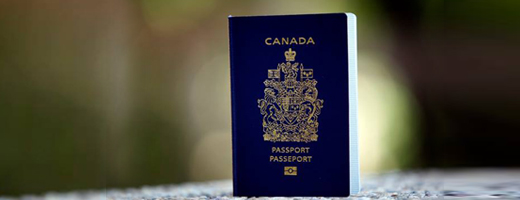
Identification documents
Canadian passports.
A passport is the only reliable and universally accepted travel identification document and it proves that you have a right to return to Canada
Canadian Travel Number
Avoid delays at the airport because your name is the same as, or similar to, that of someone on the No Fly List ( Secure Air Travel Act list)
NEXUS
If you travel between Canada and the United States often, a NEXUS card will save you time at the border
Permanent resident card
Permanent residents of Canada need a permanent resident card to re-enter Canada
Pre-boarding identification requirements
Information on the identification documents you need to bring to the airport
Travel documents for non-Canadians
Travel documents for convention refugees, protected persons or stateless persons living in Canada
Permits and certificates
Find out whether you need a visa for your destination and get it well in advance of your trip
Certificate of Canadian citizenship
A Canadian citizenship certificate is not a valid travel document
CITES permits
Information on permits to transport, import or export a listed wildlife species or items made from listed wildlife species
International Driving Permit
Your Canadian driver's licence may not be valid in your destination country
Travelling outside Canada with your vehicle
You may need a Carnet de Passages en Douane (CPD) to travel outside Canada with your vehicle.
International Certificate of Vaccination or Prophylaxis
Some countries may require you to show proof of vaccination
Your pets need travel documents to enter another country
CANPASS - Private aircraft
CANPASS cards allow private aircraft to clear customs and immigration quickly and securely
More information
Consent letter for children travelling abroad.
A consent letter helps children travelling without both parents to enter foreign countries and re-enter Canada
Marriage outside Canada
Information on the legal issues involved in getting married abroad

Notarial services
Information about getting notarial services while you are outside Canada
Travelling as a dual citizen
Information for Canadian dual citizens who are travelling to another country where they have citizenship
Travel insurance
Buy travel insurance before you travel outside Canada. Bring your insurance information with you. You may need to prove you have travel insurance to enter some countries
Mobile Passport Control app
Travellers can shorten the entry process to the U.S. by submitting their passport and customs declaration information through this app
What we are doing
Policies, acts and regulations.
- Canadian Passport Order
- Citizenship Act
- Identity Screening Regulations
Publications
- Bon voyage, but... Essential information for Canadian travellers
- Travelling with children
All related publications
- Apply online for a visa, study or work permit
- Steps to complete a passport application
- Nexus application
- CANPASS application
- CITES permit application forms

Find helpful information on health and safety, travel documents, baggage, airport security, country advice and more.

Information on a recommended consent letter for Canadian children travelling abroad.
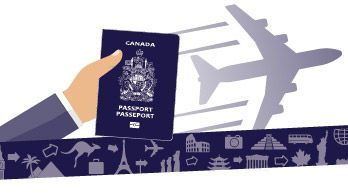
You need a valid Canadian passport to board a flight to Canada.
- Free Phone Consultation +1 (514) 989-9700
- Immigrate to Canada
- Canadian Experience Class
- Federal Skilled Worker (FSW) Program
- Federal Skilled Trades
- CRS Score Calculator
- Express Entry Draw
- Invitation to Apply
- Proof of Funds for Express Entry
- Express Entry Pool of Candidates
- Farm Stream
- Alberta Express Entry
- Alberta Accelerated Tech Pathway
- Alberta Opportunity Stream
- Graduate Entrepreneur Stream
- Foreign Graduate Entrepreneur Stream
- Skills Immigration Stream
- BC PNP Tech
- Entrepreneur Immigration Stream
- Skilled Workers in Manitoba
- Skilled Workers Overseas
- International Education Stream
- Business Investor Stream
- Express Entry Labour Market Stream
- Entrepreneurial Stream
- Post-Graduate Entrepreneurial Stream
- Skilled Worker Applicants with Employer Support
- New Brunswick PNP – Information Sessions
- Express Entry Skilled Worker Category
- Skilled Worker Category
- International Graduate Category
- International Entrepreneur Category
- International Graduate Entrepreneur Category
- Priority Skills NL: In-Demand Academic Path
- Priority Skills NL: In-Demand Work Path
- Express Entry
- Employer Driven
- Critical Impact Worker
- Skilled Worker
- Business Driven
- Entrepreneur
- Nova Scotia Demand: Express Entry (Closed)
- Nova Scotia Experience: Express Entry
- Entrepreneur Category
- Physician Stream
- Nova Scotia Labour Market Priorities
- Nova Scotia Labour Market Priorities for Physicians
- Occupations In Demand
- Ontario’s Express Entry Streams
- Employer Job Offer
- Masters Graduates
- PhD Graduates
- Regional Immigration Pilot
- PEI PNP Express Entry
- Business Impact
- Work Permit
- Labour Impact
- Skilled Worker in PEI
- Skilled Worker Outside Canada
- Critical Worker
- International Graduate
- International Skilled Worker
- Saskatchewan Experience
- Saskatchewan Entrepreneur and Farm
- Yukon Express Entry
- Business Nominee
- Yukon Community Pilot
- Immigrate to Quebec
- Regular Skilled Worker Program (RSWP)
- Quebec Experience Program (PEQ)
- Quebec Entrepreneur Program
- Quebec Investor Program
- Quebec Self-Employed Worker Program
- Certificat de Selection du Quebec (CSQ)
- Quebec Immigration FAQ
- Permanent Resident Card (PR card)
- Permanent Resident Card Renewal
- Permanent Resident Travel Document
- Residency Obligations
- Canadian Experience Class (CEC)
- Atlantic Immigration Program
- Rural and Northern Immigration Pilot
- Agri-Food Pilot
- Home Child Care Provider Pilot
- Home Support Worker Pilot
- Past Caregiver Programs
- Canada Immigration FAQ
- Moving to Canada from the USA
- Work in Canada
- Business Visitors
- Labour Market Impact Assessment (LMIA)
- Facilitated LMIA (Quebec) List of Occupations
- Canada Global Talent Stream (GTS)
- Intra-Company Transfers
- CUSMA (formerly called NAFTA) Work Permit
- CETA Work Permits
- Working with CSQ
- Post-Graduate Work Permit
- International Experience Canada
- Spouse Open Work Permit (SOWP) Canada
- Bridging Open Work Permit (BOWP) Canada
- Job Search Tool
- Social Media Presence Guide
- Canadian Resume Guide
- For Employers
- Study & Immigrate in Canada
- Canadian Designated Learning Institutions (DLI)
- Levels of Study
- Student Direct Stream (SDS) Canada
- Certificat d’acceptation du Quebec (CAQ)
- Refusals and Appeals
- International Students in Canada
- Extend a Study Permit
- International Student Health Insurance in Canada
- Student Accommodation
- Work While Studying
- International Students: Spouse and Family Dependent Visa
- Permanent Residence (PR) for international students
- Our International Student Program
Sponsorship
- Canada Sponsorship
- Inland Sponsorship
- Outland Sponsorship
- Spousal Sponsorship Quebec
- Child or Other Dependant Sponsorship
- Super Visa Canada
- Minimum Necessary Income (MNI)
- Canada Sponsorship FAQ
- Business Immigration
- Federal Investor Program (Terminated)
- Federal Venture Capital (Closed)
- Federal Entrepreneur Program (Terminated)
- Start-Up Visa Canada
- Federal Self-Employed
- Quebec Self-Employed
- About our Business Immigration Team
- Our Canadian Immigration Services
- Criminal Inadmissibility
- Temporary Resident Permit (TRP)
- Medical Inadmissibility
- Legal Opinion Letters
- DUI Convictions
- Criminal Rehabilitation
- Citizenship Requirements
- Citizenship Application
- Citizenship FAQ
- Canadian Economy
- Taxation in Canada
- Newcomers Services
- How to Find Accommodation in Canada
- Visitor Visa
- Business Visitor Visas
- electronic Travel Authorization (eTA)
- Canadian Immigration News & Updates
- Canadian Immigration Blog & Resources
- CLB Language Converter
- Visiting Canada Tool
- What is a NOC Code in Canada?
- How to Write a Reference Letter
- Educational Credentials Assessment (ECA) Guide
- Canadian Cover Letter Guide
- Canadim’s Employment Services
- Canadian Language Benchmark Guide
- Canadian Immigration Glossary
- See all guides & FAQs
- Refugees & Humanitarian
- Canadian Immigration Processing Fees
Living in Canada
How to Bring Your Pets to Canada
Nearly all families would say they consider their pets essential members of their families. And as such, many wonder how they can bring their pets to Canada with them when looking into Canadian immigration . Fortunately, while there are certain requirements and restrictions for individuals moving to Canada with pets, import laws allow most domestic pets to be brought into the country.
Canadian Import Guidelines for Animals
When bringing your pet to Canada, you are technically engaging in the importation of animals to Canada. All import and export of animals to Canada are regulated by the Canadian Food Inspection Agency (CFIA) which has inspectors on duty at all Canadian ports of entry (POE) in order to regulate the import of animals. The exact requirements and restrictions vary depending on the type of animal, species, country of origin, health status, and purpose of import, so newcomers should be sure to check the CFIA website prior to travelling to Canada.
The requirements for importing pets vary according to the factors listed above. It may be necessary for some pet owners to obtain a permit allowing them to bring their pet to Canada, or they may require a certificate from a veterinarian stating that their pet has no diseases. In some cases, pets are held by CFIA agents in quarantine for certain periods of time prior to being allowed to enter Canada. Please be sure that you adequately understand the requirements for your pet in order to ensure you won’t have any problems entering the country.
Below are the import requirements and restrictions for some of the most commonly imported pets, as well as resources for importing all varieties of pets.
Bringing Your Dog to Canada
While restrictions do exist on the import of dogs, as long as your dog is healthy and disease free, you should be able to bring your pup to Canada as long as you follow the proper procedures.
Personal vs Commercial Import
The first step to importing dogs to Canada is determining if the dog is being imported for personal use or for commercial use:
Personal Import: The import of a dog (regardless of age) that is personally owned by a Canadian resident as a pet; or as a service dog that is accompanied by the person to whom the dog is assigned.
Commercial Import: The import of a dog for sale, adoption, breeding, show, exhibition, scientific research, or animal welfare organizations.
The majority of pets will be classified as personal imports, but if your dog is not travelling with you, or if a dog is being brought into the country for sale, then the dog qualifies as a commercial import and will require a permit if older than 8 months. Applications for permits should be submitted 30 days prior to travel and can be accessed on the CFIA website .
Dogs who qualify as personal imports do not require a permit to enter Canada. However, even personally imported dogs will require some documentation.
Documentation and Inspection Required for Dogs
All dogs entering Canada require proof of all necessary vaccines, depending on the age of the dog. A dog that is less than 3 months of age at the time of the import does not require rabies vaccination.
Most dogs imported into Canada will undergo an inspection by the Canada Border Services Agency (CBSA) which has agents at every Canadian port of entry (POE). As well, in certain circumstances, dogs may require inspection by a CFIA agent. Dog owners should use the CFIA Automated Import Reference System (AIRS) to determine if their dog will require a CFIA inspection and plan accordingly.
The CBSA inspection for animals is $31.27 + tax for the first animal in a shipment, plus an additional $5.21 + tax for each additional animal. If a dog does not meet Canada’s import requirements for rabies certification then it will be subject to additional fees and will be required to undergo vaccination against rabies at the owner’s expense within two weeks of arrival.
Canada does not require a microchip or tattoo identification for dogs imported as personal pets, however, dogs under 8 months of age imported under the commercial category must be identified by an electronic microchip.
If travelling to Canada by plane, pet owners should check with their airline as many airlines will require additional documentation and travel restrictions for dogs.
With all of this in mind, dog owners should feel confident in their abilities to bring their canine friends along with them to Canada.
Bringing Your Cat to Canada
Canada does have some restrictions and requirements for our feline counterparts, but as long as you follow the required procedure, you shouldn’t have any trouble bringing your cat with you to Canada.
Rabies Vaccination Requirements
The biggest health and safety concern with the import of cats is the transmission of the viral disease, rabies. For this reason, all cat owners bringing their domestic cats to Canada must be prepared to prove their cat is free of the disease. There are two methods cat owners can take:
Rabies Vaccination Certificate: A cat owner can obtain a certificate from their veterinarian attesting to the fact that their cat has received the rabies vaccine. The exact requirements for this certificate are listed on the CFIA website . The European Union pet passport is an acceptable alternative as long as all required information is included.
Veterinary Certificate: Cat owners bringing cats from a rabies-free country may obtain a veterinary certificate attesting to the fact that the pet is being imported from a country where rabies has not occurred within the six months preceding the travel to Canada.
If a cat is not certified according to the import requirements, the owner will be required, at their own expense, to have the cat vaccinated against rabies within a specified period of time and provide the vaccination record to a CFIA office.
Documentation and Inspection Required for Cats
Cats less than 3 months in age are exempt from import restrictions, but all cats older than 3 months are subject to import requirements. Cats do not have to be quarantined when entering Canada, nor do they require a health certificate or import permit.
The only document required for domestic cats is a preventative measure regarding rabies disease. Cats are required to have documentation showing they are rabies free and have been properly vaccinated or are from a rabies-free country.
Most cats imported into Canada will undergo an inspection by the Canada Border Services Agency (CBSA) which has agents at every Canadian port of entry (POE). It is not necessary to notify border agents in advance of travel with cats, as there will always be an agent authorized to perform such an inspection.
The CBSA inspection for animals is $30 + tax for the first animal in a shipment, plus an additional $5 + tax for each additional animal. If a cat does not meet Canada’s import requirements for rabies certification then it will be subject to additional fees and will be required to undergo vaccination against rabies at the owner’s expense within two weeks of arrival.
Canada does not require a microchip or tattoo identification for pet cats. If travelling to Canada by plane, pet owners should check with their airline as many airlines will require additional documentation and travel restrictions for cats.
If a cat is not domestic, it will be subject to a different set of requirements. Non-domestic cat owners should consult the CFIA Automated Import Reference System (AIRS) to determine import requirements.
With all of this in mind, cat owners should feel confident bringing their feline friends along on their journey to a new life in Canada.
Bringing Other Pets to Canada
For those families wishing to travel with other pets, the CFIA has specific requirements for all types of pet imports. To learn more about the requirements for your pet, consult the CFIA’s resource here .
General Tips to Prepare for Your Move to Canada
While the requirements and factors can vary a bit depending on the factors listed above, there are some general tips to think about when considering how to bring your pet to Canada.
- Certification of Rabies vaccination (for mammals from countries that aren’t recognized as rabies-free)
- A veterinary certificate (for mammals from countries that are recognized as rabies-free)
- Proof of your pet’s age (specifically for pets that would require a rabies vaccine but are younger than 3 months old)
- Veterinary certificates against Avian Influenza (for birds being imported from countries outside of the United State)
- Be sure to check with your vet to make sure that your pet is healthy enough to travel. Moving to a new country is stressful for everyone involved, including your animal companions. Make sure to check with your vet to ensure the health of your pet and get their recommendations on the best and healthiest ways to travel with your pet.
- Your pets travel container should allow your pet enough room to stand, sit, lay down, and turn around
- Have plenty of ventilation
- Have a water spout or dispenser to prevent dehydration
- If travelling for a long time, be sure to plan out ways to give them a break from their containers . Many airports have specific areas for pets to be let out to use the bathroom, eat and stretch a bit. It’s a good idea to look into this a bit before travelling so your pet isn’t kept in their travel case for too long of a duration.
To find out more about your own pathways for immigration to Canada, simply complete our free online assessments and one of our legal representatives will contact you to discuss your immigration options.
Recent articles
Top 5 cheapest cities to live in canada: affordable living explored.
Canada has become a top destination for immigrants from around the world. However, the cost of living in major Canadian cities like Toronto, Vancouver and […]
Nova Scotia Immigration
Moving to Nova Scotia: A Fresh Start in the East!
This picturesque province, brimming with friendly locals and a slower pace of life, offers a unique blend of natural beauty and a deep sense of […]
Best Ways to Immigrate to Montreal, Quebec
Montreal, Quebec, is a very popular destination for newcomers to Canada. Its popularity is no surprise given its affordability and cultural diversity. Quebec also has […]
Living in Canada | MONTREAL
The Magic of Montreal: A Guide to Vibrant Living
Nestled in the heart of Quebec, Montreal stands as a beacon of cultural diversity, artistic expression, and joie de vivre. As one of Canada’s most […]
Canada Permanent Residence
Temporary Resident to Permanent Resident (TR to PR) – Main Programs
Following the success of the TR to PR pathway, there is increasing interest in exploring new programs that facilitate the transition from Temporary Resident (TR) […]
Living in Canada | Newcomers to Canada
How to Find the Best Internet Service Provider as a Newcomer in Canada
Immigrating to Canada is a path filled with many questions and challenges, especially when setting up your new home. One essential aspect of this setup […]
Discover your Canadian immigration options. Get your free assessment now!

What to Know When Traveling Across the US/Canada Border with Your Pet
International travel with your best friend by your side can be an exciting adventure, but navigating the rules and regulations for crossing the border can feel daunting.
Whether you're heading to Canada for a pet-friendly weekend getaway or attending a Canadian pet show or expo, ensuring that you meet all the needs for crossing the border with your furry friend will set you up for a smooth journey.
Keep reading to learn everything you need to know about traveling with your pet across the US/Canada border.
In this guide, we'll cover essential documentation, tips to set yourself up for a stress-free crossing and answer some of the most common questions about pet-friendly international travel.
Can You Drive Across the Canadian Border with a Dog (or Cat)?
If your next pet-friendly road trip will take you across the border into Canada, you're in luck. Pet parents can drive from the United States to Canada with the whole family, including their furry family members, if they have the necessary paperwork.
Entering Canada may be more complicated if your dog is coming from any country other than the United States. This is due to the concern of rabies, which causes some countries to face restrictions. If your dog has recently been to another country, it is recommended that you look further into the requirements for traveling from that area or ask your veterinarian.
What Do I Need to Cross the US Border into Canada with My Dog?
When traveling to Canada with your dog, the documentation required will depend on their age.
If your dog is 3 months old or older, you must provide a rabies vaccination certificate to cross the border. This document must be issued by a licensed veterinarian and show that your dog received a rabies vaccine within 3 years of the date you are crossing.
The rabies vaccination certificate must include the following:
- Your name and address
- A description of your dog (breed, sex, age, color, markings, etc.)
- Date of rabies vaccination
- Vaccine product information
- Vaccination expiry date
- Name, address, license number, and signature of the veterinarian who administered the vaccine
Puppies under 3 months of age are not required to provide proof of a rabies vaccine. However, border security may ask for proof of your dog's age.
Are the Rules Different for Cats or Other Pets?
All cats over the age of 3 months must be accompanied by a rabies vaccination certificate showing that the vaccine was administered within 3 years of the date of travel. Kittens under 3 months old are exempt from this requirement.
The requirements for ferrets to cross the border are similar. However, the rabies vaccination certificate must show that the vaccine was administered within 12 months of the travel date.
Any pet parents traveling with a bird must complete a " Veterinary Health Certificate for Export of Pet Birds from the United States of America to Canada ." This form details important information for your upcoming travel, including the number of birds you can travel with, depending on their species.
Do you have a pet that we haven't addressed? More information can be found on the Canadian Food Inspection Agency website .
Can You Bring Pet Food from US to Canada?
Of course, bringing your pet over the border is only one part of the bigger picture. In addition to your pet, you must ensure you have everything they need, including their food. This leads to the question: "Can you bring pet food across the border?"
The short answer is yes, but only if you adhere to a few rules:
- Maximum limit of 20 kg (approximately 44 lbs)
- Must be of United States origin and commercially packaged
- The pet that will eat the food must be with you at the time of crossing
If you feed your dog a brand readily available in Canadian pet stores, it may be easier to purchase it when you arrive. This way, you won't have to worry about weight limitations, especially if you are traveling with an extra-large dog.
Are The Rules the Same Returning to the US?
U.S. Customs requires that all travelers bringing a dog or cat into the country from Canada provide proof of rabies vaccination that is no less than 30 days before arrival. This ensures that the vaccine has had time to be effective.
However, the animal health requirements may vary from state to state, with some requiring additional documentation like a health certificate. If you aren't familiar with the criteria set in your destination state, you can find clarification on the State Animal Health Officials website .
8 Tips for Safe Travel to Canada with Your Dog or Cat
Now that we have clarified the legal requirements for being allowed to cross the border, let's talk about the trip itself. Here are a few key considerations to help you plan a safe and enjoyable trip for everyone involved, including you AND your pet!
Ensure They Are Comfortable in the Car
Is this your first big road trip with your pet? Before heading out on the open road, consider taking some time to introduce them to riding in the vehicle. It may sound foolish. After all, they don't have to do anything but relax and enjoy the ride. However, the vehicle itself can be a scary experience for some pets due to the new sounds and sensations.
The best way to approach this is through a step-by-step process, slowly building on your pet's experience. Start by sitting in the car with the engine off. When your pet is comfortable with the space, turn on the engine to introduce the sound. Eventually, you can introduce movement with a quick trip around the block and then a short trip to a local pet store or park.
By working up to a longer trip, you are setting your pet up for many successful road trips to come.
Use a Seatbelt or Carrier
While it may be tempting to let your pet move around the vehicle freely, this could create a severe safety concern. Always secure your pet when the vehicle is in motion. This will protect your pet in the event of an accident and prevent them from becoming a distraction while you are driving.
Place cats or smaller dogs in a carrier and secure the carrier using the car seatbelt. You may not have the space necessary for a suitable carrier for larger dogs. Instead, you can use a crash-tested dog harness and a seatbelt to keep everyone safe.
Bring a Favorite Toy or Blanket
Bring a favorite toy or blanket to help your pet relax and settle in during your car ride and at your final stop. These items have a familiar scent, which is comforting. While this is often recommended for pets who are nervous or anxious in the vehicle, it's an excellent way to help any pet feel at home while on the road.
Consider Calming Products
If you have an incredibly anxious pet , consider trying calming products to help them relax. Calming chews , sprays , and collars are designed to help your pet relax, making a potentially stressful situation easier to manage.
This is helpful not only if you are trying to manage your pet's car anxiety but also because it can make crossing itself easier. A stressed or irritable pet will often act out. For example, a dog may become incredibly vocal, barking, and growling at anything and everything. This can make navigating your conversation with a border agent difficult. Keeping your pet calm will allow you to focus on getting both of you to your destination safely and without incident.
Check Your Pet's ID
Before leaving your house, take a moment to check any identification and ensure it is current. If your pet wears a physical ID tag, check that the information is accurate. It's easy to forget about updating your pet's tag if you recently changed phone numbers. You must also check for extreme wear and tear, as this can make the tag illegible.
Is your pet microchipped? One common mistake pet parents make is forgetting to update the database when your contact information changes. If you haven't verified your information recently, now is the perfect time!
Stop Before Crossing the Border
This is an easy step that is often overlooked. If you have crossed the US/Canada border at any point, you know that it can quickly get backed up. When this happens, your pet needs to stay in the vehicle without becoming anxious or agitated, which will be difficult if they are trying to communicate that they need to go to the bathroom.
Avoiding this problem is easy – take a planned pit stop just before crossing the border.
Keep Documentation Within Reach
Just as your passport is within reach and ready to go upon reaching the border, your pet's documentation must be readily accessible. When we go over the border with our pets, I keep their rabies vaccination certificates in the same spot as my passport, ensuring I can quickly grab everything when speaking with the border agent.
If you're fumbling and failing to find the documentation necessary, you are far more likely to be pulled in for a secondary check. Some agents are stricter than others. This can make the situation even more stressful for a pet who is already unsure of what is happening.
Be Prepared with High-Value Treats
A bag of your dog's favorite treats is another fantastic item to have close at hand. Even the best-behaved and trained dog may have an "off" day. Picture yourself trying to answer the border control agent's questions while your dog barks or misbehaves behind you.
Having a bag of treats available will allow you to distract your dog by giving them obedience commands and offering a reward to keep their attention. This can make managing an otherwise stressful and challenging border crossing far easier.
Final Thoughts: Cross-Border Travel with Your Pet
If you are planning a cross-border road trip with your pet, take the time to research and plan to avoid any problems. This starts with ensuring you have the necessary documentation, like a rabies vaccination certificate, if you are traveling with a cat or dog.
Pay careful attention to the restrictions relating to transporting food, treats, or chews. Alternatively, plan to purchase the supplies you need after crossing the border if they are readily available in Canadian pet stores.
Our furry friends make the best travel companions. Get out there and make memories with your best friend by your side!
Join the PetGuide community. Get the latest pet news and product recommendations by subscribing to our newsletter here .

Language selection
- Français fr
Network maintenance
Due to system maintenance, some sections of the site will be unavailable from 3 am to 7 am (EST) on Sunday, December 18, 2022 .
Due to system maintenance, the CFIA website will be unavailable from 7 am to 7 pm (EST) on Saturday, October 16, 2021 . We apologize for any inconvenience this may cause.
Pets (dogs, cats and ferrets): Export certificates
This page is part of the guidance document repository (gdr)..
Looking for related documents? Search for related documents in the Guidance Document Repository
Most pets travelling from Canada to another country will need an export certificate issued by a licensed veterinarian and endorsed by an official Canadian Food Inspection Agency (CFIA) veterinarian.
It is mandatory to obtain CFIA endorsement of an export certificate before the animal(s) leave Canada as the CFIA cannot endorse or issue a certificate if the animal(s) is/are no longer in Canada.
The requirements for pets travelling to another country are very specific and different for each country. As a pet owner, you must plan ahead to ensure you have enough time to meet any testing, vaccination or treatment requirements and obtain the necessary certifications. Some countries may also require owners to obtain an import permit in addition to an export certificate. All official documents must be completed accurately.
Information on pets travelling to certain countries, including export certificates , is outlined below. In some cases, the certificates will be in English and/or another language without a corresponding French version. This is determined by the requirements of other countries and is outside of the control of the CFIA.
In order to avoid delays or mistakes with certification, which could result in the animal being ineligible to travel, it is important to review the requirements and export certificate well in advance and plan out any required tests, vaccinations or treatments with your veterinarian.
It is important to note that countries may change their requirements without prior notification to the CFIA. It is strongly recommended that prior to starting the export process you obtain a current copy of the import requirements from the appropriate veterinary authorities or embassy of the destination country and review them against the export certificate to ensure that all requirements are addressed. If you have any concerns, please contact the CFIA animal health office in your area for assistance.
Countries without a certificate
If you are travelling to a country for which there is currently no negotiated export certificate and the country does not provide one, you must contact the appropriate veterinary authorities or embassy of the destination country to obtain a copy of the current import requirements. If the destination country does not have a prescribed format for the export certificate and their import requirements can be met, the Canadian International Health Certificate can be used. Otherwise, the requirements will need to be submitted to the CFIA animal health office in your area for review to determine if a certificate can be negotiated. It is important to note that the process to negotiate an export certificate with another country can take several months. If you are unsure whether the Canadian International Health Certificate can be used, contact the CFIA animal health office in your area for assistance before starting the export process.
Transiting other countries
As of January 15, 2022, the European Union (EU) requires all dogs, cats and ferrets transiting through the EU to meet specific conditions and be certified. See Export of dogs, cats, and ferrets to the European Union and Northern Ireland: In-transit and commercial movements for more information.
If the animal will be transiting 1 or more countries before reaching the destination country, additional requirements from both the transit and destination country may apply. As the owner, you must contact the veterinary authority or embassy of both the destination country and transit countries to request the import requirements for your specific travel situation to determine whether additional certification is required.
If you have difficulty obtaining any of these certificates please contact the CFIA animal health office in your area.
Export certificates
Canadian international health certificate.
- Dogs and cats
- Dogs, cats, rabbits and fur-bearing animals
- Export of dogs and cats to Barbados
- Dogs and cats HA2348 – PDF (469 kb)
- Ferrets HA3174 – PDF (202 kb)
Brunei Darussalam
Cayman islands.
- Cats and dogs
- Cats and dogs – PDF (98 kb)
Eurasian Economic Union
European union.
- Dogs, cats, and ferrets to the European Union and Northern Ireland: In-transit and commercial movements
- Dogs, cats, and ferrets to the European Union and Northern Ireland: Non-commercial movements
French Polynesia
Great britain (england, scotland and wales), the channel islands and the isle of man.
- Dogs, cats, and ferrets to Great Britain, the Channel Islands and the Isle of Man – Non-commercial movements of 5 or less animals
- Dogs, cats, and ferrets to Great Britain, the Channel Islands and the Isle of Man – Commercial movements and non-commercial movements of more than 5 animals
- Dogs and cats – PDF (144 kb)
Korea (Republic of)
Kyrgyz republic (kyrgyzstan).
- Dogs and cats – PDF (675 kb)
New Zealand
Northern ireland.
- Dogs, cats and ferrets – Non-commercial movement of 5 or less – PDF (130 kb)
- Ferrets – PDF (138 kb)
Philippines
- Dogs and cats – PDF (51.3 kb)
Russian Federation
Saint-pierre and miquelon, sint maarten.
- Dogs,cats, and ferrets (HA2912)
South Africa
- Cats – PDF (140 kb)
St. Vincent and the Grenadines
- Cats – PDF (464 kb)
- Dogs – PDF (463 kb)
Switzerland
- Dogs, cats and ferrets – Non-commercial movement of 5 or less – PDF (209 kb)
Trinidad and Tobago
- Dogs and cats – PDF (465 kb)
- Dogs, cats and ferrets
Turks and Caicos Islands
United arab emirates, united states of america.
Snowbird Advisor
Popular topics, featured snowbird resources.

Travel Insurance
The travel insurance specialists for snowbirds...

Phone Plans
Get exclusive members-only pricing on Canada - U.S. roaming plans...

Currency Exchange
Snowbirds, save on foreign exchange rates...

Vehicle Transport
Have your vehicle shipped between Canada and the U.S.

Virtual Pharmacy
Free prescription medication delivery + virtual doctor visits...

Member Benefits
Gets exclusive discounts, services and resources for snowbirds...

Destination Guides
Get the inside scoop on select snowbird destinations...

Credit Card
No foreign transaction fee credit card for snowbirds...

Travel Services
Get exclusive travel offers and discounts...
MEMBER BENEFITS & RESOURCES FOR SNOWBIRDS

Exclusive 5% discount for Snowbird Advisor members!
Snowbird Guide to Bringing Your Pets to the U.S. and Beyond for the Winter
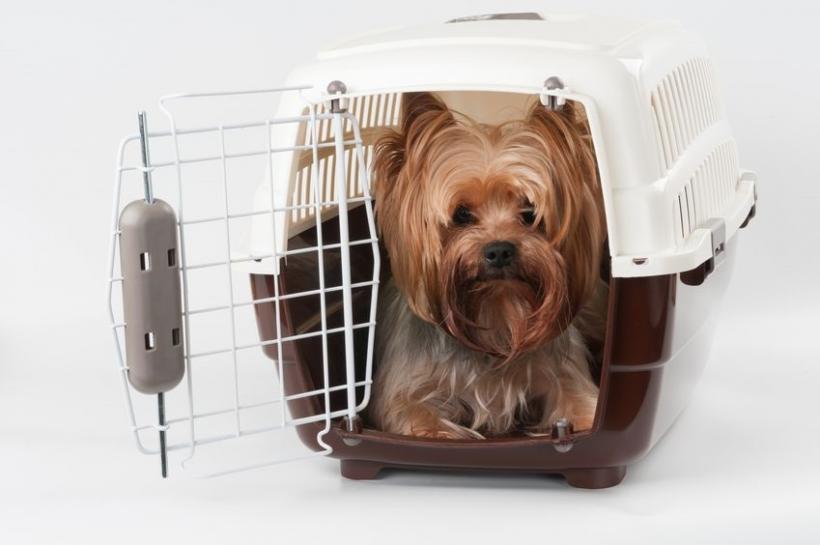
LAST UPDATED: December 7, 2022
Most Canadian snowbirds who own cats or dogs will of course want to bring them along when they go away for the winter each year. Whether you are travelling by air or by car, the rules for bringing a pet are essentially the same, but what’s involved is vastly different and requires a lot of planning and organization.
Read on for tips and guidelines to help you prepare for either mode of transport.
Requirements to bring your pets to the U.S.
First of all, your pet must be healthy, look healthy and be well groomed or it can be turned away.
It is required that all dogs are up to date with rabies shots and other vaccinations and you should carry a document from your veterinarian certifying general good health and vaccination records. Although cats are not technically required to have rabies shots, many border guards will ask for proof. Vaccination records are also required for coming back to Canada.
Before you travel, be sure to look at the websites of the departments that oversee the importation of pets (even though you are not importing your pet, you are subject to the same health requirements).
In the United States, this is the U.S. Department of Agriculture (USDA). You can find regulations for importing pets on the USDA website . The Centre for Disease Control (CDC) website also has requirements for importing pets, including rabies vaccinations .
Additionally, some States have their own requirements for bringing in pets, in particular, Hawaii, which imposes a quarantine period.
It is also highly recommended that your pet be micro-chipped for identification purposes should he or she escape during travel or during your stay in the United States.
Cats are required to be removed from their cat carrier and this can be problematic. Make sure you have gloves and the right clothing to deal with this.
Start well before your travel date to thoroughly investigate the requirements for your pet to travel.
Bringing your pets to countries other than the U.S. for the winter
Canadians who winter in countries other than the United States may still wish to bring their pets with them.
You can find information on the requirements for bringing pets from Canada to Mexico here on the Government of Canada website.
Other Countries
If you are travelling to other countries, be sure to research the pet importation requirements for your destination before you go, as each country has its own regulations regarding bringing in cats and dogs - and in some cases, it may not even be permitted.
Requirements to bring your pets back to Canada
It’s important to remember that you will be subject to inspection upon returning to Canada if you are bringing in a pet.
The Canadian government agency that oversees the importation of animals is the Canadian Food Inspection Agency (CFIA). You can find rules and regulations about importing a pet to Canada on the CFIA website as well as information on travelling with pets on the Government of Canada website .
If you have purchased your pet while in the U.S. or another country, different rules may apply so be sure to investigate the rules for importing an animal.
Tips for travelling by air
Travelling by air is in many ways a simpler option than by car. However, it is extremely important to check with each airline as their policies for carrying pets varies. This might influence your choice of airline, as some are more pet friendly than others.
Before planning your trip, be sure to investigate the feasibility of transporting your pet on the dates you would like to travel.
Larger pets have to be carried in the cargo hold area of the aircraft and in approved animal crates. However, most airlines have blackout periods when they will not carry any pets whatsoever in the hold and this usually includes much of the summer months.
In addition, since the COVID-19 pandemic, some airlines are restricting pets in the hold due to the likelihood of flight delays, etc.
If your pet is small enough, it may be allowed in the passenger cabin but must be kept under the seat, not all airlines allow this, and it can even vary by time of year. So be sure to ask all the right questions before you book your flights.
When you do book your flights, you must advise the airline at the same time that you will be travelling with a pet.
Airlines have strict rules about the type of carrier your pet can travel in, so be sure to ask about that too and make sure you have one that complies. The carrier should be large enough for your pet to comfortably lie down and have adequate padding for comfort. There are specific rules for carriers that are allowed in the cabin, so again, be sure to ask.
Many vets advise a mild tranquillizer for your pet before air travel. There are sprays for the carrier that relieve anxiety. Be sure to ask your vet about this and any other tips he or she may have.
Travelling by car
Before you go: Travelling by car with your pet requires significant preparation and planning. First of all, you will want to source hotels or motels along your route that allow pets. You can find this out by checking the websites of the many chains that operate throughout the U.S. Make reservations well in advance so your pet is not in the car any longer than necessary when you arrive. Many hotels do apply a surcharge. You can put the litter box on some newspapers next to the hotel toilet.
Make sure you have sufficient food and treats for your pet’s journey and also check that you can import the food and treats you normally use. If you don't do this, you will have to stop once in the U.S. and purchase food there. Carry plenty of water and bowls for food and water. And be sure to take any medications your pet needs.
Make sure you have a crate or carrier for the journey. It is wise to line the carrier with a number of puppy training pads, in case of any accidents or car sickness. Other useful items are paper towels, rubber gloves, leashes, trash bags, plastic spoons for tinned food, and rug cleaner for the car or hotel room. For cats, you will want a litter box for the hotel and litter tools.
En route: In the car, it is better if your pet remains restrained in a carrier or cage, this is for your safety and theirs. If you do open the carrier, do it with the car doors closed, as you don’t want to risk your pet escaping outside the car.
Travelling through the southern U.S. even in the winter can still be very hot and if you are driving alone any rest stops should be kept to a minimum so your pet is not left in a hot car. Dogs can be taken out of the car on a leash for bathroom breaks and to eat and drink, however, cats are best kept in the car and fed and watered there, to prevent any chance of escape.
Choose the fastest and most direct route using interstate highways. This is not the time to take scenic, mountain routes. Many pets get carsick, especially on high and winding roads. The best thing for your pet is to get to your destination as soon as possible.
Disclaimer: The material provided on the SnowbirdAdvisor.ca website is for informational purposes only and does NOT constitute legal, tax, accounting, financial, real estate, medical or other advice, and should not be relied on as such. If you require such advice, you should retain a qualified professional to advise you.
Snowbird Services & Resources
The travel insurance specialists for snowbirds, boomers and seniors. Get the right coverage at the right price...
Free prescription medication delivery + virtual doctor visits and more...
Save on currency exchange with preferred rates from Snowbird Advisor...
Have your car shipped between Canada and the U.S. for the winter...
modal-shelf#titleToggle"> Get a Free Membership
Snowbird Advisor members receive exclusive snowbird tips, tools, offers, services and more!
We respect your privacy and will never share your personal information. View our Privacy Policy. Cross Border Media Inc. | 430 - 245 Eglinton Avenue East, Toronto, ON M4P 3B7

We keep your e-mail safe. You can unsubscribe at any time. Privacy policy.
Traveling with Pets
CDC is extending its temporary suspension of dog importation from high-risk dog rabies countries until July 31, 2024. This suspension includes dogs arriving from countries without high risk of rabies if the dogs have been in a high-risk country in the past 6 months. Learn about the current rules: What Your Dog Needs to Enter the United States

Photo Credit: Audilis Sanchez, CDC
Taking your dog or cat on a flight abroad? Make sure you have your pet’s documents when traveling internationally and returning home to the United States. Leave yourself plenty of time before the trip to take care of your pet’s required medical care and paperwork. Remember to start the process early.
First Stop—Your Vet’s Office
If you are traveling internationally, tell your veterinarian about your plans as soon as possible. Together, you can make sure your pet is healthy enough to travel and meets the requirements for your destination country and for your return to the United States. Requirements may include
- Blood tests
- Vaccinations
- Microchips for identification
- Health certificates
Airlines and countries often have different requirements, so make sure you know what the specific ones are.
Research How to Fly with Your Pet

Talk to your vet about your travel plans and your dog’s rabies vaccination. Photo credit: David Heaberlin, CDC
Give yourself plenty of time to do your homework before your trip. A great place to start is the Pet Travel website of the US Department of Agriculture’s Animal and Plant Health Inspection Service (APHIS).
Different airlines have different rules about whether and how a pet can travel. Depending on the airline, your pet may be able to travel on your flight either in the cabin or in the cargo hold. Confirm this ahead of time with your airline.
On airlines that allow pets to travel, only small dogs and cats that can fit in special carriers under the seat are allowed in the cabin. Their owners must care for them during any layovers. Some airlines may not allow them in the cabin and will transport them as cargo in a heated and ventilated hold. Cats and dogs may travel and rest better this way, since it is quieter and darker, according to the International Air Transport Association.
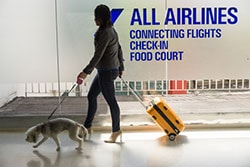
Research how to fly with your pet. Photo credit: Misty Ellis, CDC
Another way for your pet to travel is on a separate flight as an air cargo shipment. If this is your preference, or a requirement based on your dog’s size or the destination country’s rules, then get your pet used to the shipping kennel ahead of time. Make sure the door latches securely to avoid any mishaps in transit. Ask your veterinarian for advice about when to give food and water. If a pet is traveling as an air cargo shipment , you must make arrangements for pickup at the final destination.
Some US carriers don’t allow pets to be shipped between May and September, the hottest months for animals to travel in the Northern Hemisphere. No matter what time of year, safety is always a concern when pets travel by airplane. If absolutely necessary for a dog or cat to travel in cargo, it must be in a sturdy container with enough room to stand and sit, to turn around normally while standing, and to lie down in a natural position. For more information, visit the US Department of Agriculture pet travel website .
When waiting for a connecting flight, you may have to care for a pet traveling with you in the cabin, while the airline staff or ground handlers care for a pet traveling in cargo. Check with your airline(s) beforehand to see what is required.
Consider Your Pet’s Comfort
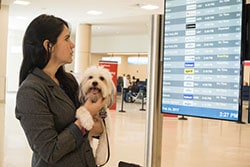
Consider your pet’s comfort when traveling. Photo credit: Misty Ellis, CDC
Loading and unloading can be the most stressful part of travel for animals. Consider these tips:
- Get your pet used to its carrier before the flight.
- Purchase flights with fewer connections or layovers.
- Pick departure and arrival times to avoid extreme heat or cold. For example, planning a nighttime arrival to a hot destination may be better for your pet.
- Consult with your veterinarian. The International Air Transport Association discourages the use of sedatives or tranquilizers because they could harm animals while in flight.
- Walk your pet before leaving home and again before checking in.
- If your pet is allowed in the cabin, check in as late as possible to reduce stress.
- If your pet will be transported as cargo, check in early so it can go to the quiet and dimly lit hold of the plane.
Cruise Ships and Travel by Sea
Different cruise ships have different rules about whether a pet or service animal can travel with you and what documents they require. Confirm this ahead of time with your cruise ship. If you travel with your pets internationally on a cruise ship or other maritime vessel, you will be required to meet federal entry requirements to enter or re-enter the United States with your pets. Note that CDC has temporarily suspended the importation of dogs arriving from countries that CDC considers high risk for dog rabies , including dogs that have visited a high-risk country in the past 6 months.
Requirements for Dogs Leaving the United States
CDC does not have requirements for dogs leaving the United States. However, if you plan to return to the United States with your dog, the dog will be required to meet the same entry requirements as dogs arriving from foreign countries (see below). If you plan to take your dog to a country at high risk for dog rabies , be sure to review the importation requirements before leaving the United States, because your dog may not be allowed to return to the United States due to the current temporary suspension , which applies to dogs that live in the United States and have traveled to high-risk countries, even if only for a short visit.
Visit the US Department of Agriculture website for pet entry requirements in foreign countries.
Requirements for Dogs Arriving in the United States
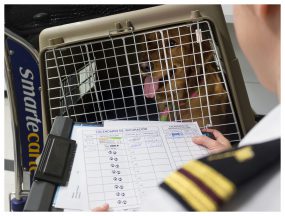
Meet the requirements for dogs entering the United States. Photo credit: Derek Sakris, CDC
Whether returning or coming to the United States, all dogs must appear healthy . There is a temporary suspension for dogs imported from countries that CDC considers high risk for dog rabies .
Some states may require vaccinations and health certificates. Check with your destination state’s health department before you leave on your trip.
Some airlines, cities, or states restrict certain breeds, so be sure to check before you travel.
The US Department of Agriculture has additional restrictions for some dogs arriving in the United States, such as working dogs and dogs intended for resale or adoption.
Requirements for Cats Arriving in the United States
Cats aren’t required by CDC to have a rabies vaccination certificate to enter the United States. However, most states and many other countries require them for cats, and CDC recommends that all cats be vaccinated against rabies. Be sure to check your destination’s requirements and ask your veterinarian before traveling.
Other kinds of pets
If your pet is not a cat or dog, there may be different requirements. Some animals , such as primates (monkeys and apes) or African rodents , won’t be allowed back into the United States. Even if they originally came from the United States, they can’t be brought back here as pets.

With careful planning, your pet can stay healthy and safe while traveling. Photo credit: Audilis Sanchez, CDC
Illness or Death of a Pet During Travel
Despite all precautions, pets sometimes get sick or even die on an airplane. Public health officials are required to make sure an animal didn’t die of a disease that can spread to people. They may have to do an animal autopsy or conduct other tests, at your cost, to figure out the cause of death. The animal’s remains often cannot be returned to you after this testing.
Think of Different Options
Make sure your pet is healthy enough to travel by air. If you have any doubts, consider leaving your pet with a trusted friend, family member, or boarding kennel during your trip, or taking another mode of transportation.
With careful planning, your pet will arrive both at its destination and return home healthy and safe.
- Information on Dog Importation for US Rescues, Shelters, and Adoption Agencies
- Information on Dog Importation for US Veterinary Clinics
- International Air Transport Association- Traveler’s Pet Corner
- Animal Transportation Association
- International Pet and Animal Transportation Association
- Centers for Disease Control and Prevention
- U.S. Department of Agriculture
- National Agricultural Library
- U.S. Fish & Wildlife Service
- U.S. Department of State
- U.S. Department of Transportation
- American Veterinary Medical Association
- CDC’s Healthy Pets, Healthy People website
- Travelers' Health
- Healthy Pets Healthy People
- Southern Border Health and Migration
- Port Health
- Division of Global Migration Health
To receive email updates about this page, enter your email address:
Exit Notification / Disclaimer Policy
- The Centers for Disease Control and Prevention (CDC) cannot attest to the accuracy of a non-federal website.
- Linking to a non-federal website does not constitute an endorsement by CDC or any of its employees of the sponsors or the information and products presented on the website.
- You will be subject to the destination website's privacy policy when you follow the link.
- CDC is not responsible for Section 508 compliance (accessibility) on other federal or private website.
What are you looking for?
Traveling with pets.
Are you planning to travel from Canada to Europe with an animal ? Please carefully read this information, as the EU strictly enforces regulations on animal travel in order to protect the member states against the introduction and spread of rabies and other infectious diseases.
Do you plan to travel with your pet(s) from Canada to Germany (up to five per person) and need specific information about regulations and procedures? Below you will find basic information about various possible scenarios. Please note our disclaimer.
1. Accompanied Noncommercial Movements of Pets (Cats, Dogs and Ferrets)
When entering the Federal Republic of Germany directly from Canada with dogs, cats or ferrets, you must have with you a health certificate issued by an official veterinarian in accordance with the EU uniform sample, as well as supporting documents, such as a vaccination certificate. The animals must not be intended for sale.
Animals older than three months require valid vaccination protection against rabies (inactive vaccine with an efficacy level of at least one international antigen unit according to the WHO standard) and a transponder inserted under the skin (microchip) in accordance with European standard ISO 11784 (15 digits) or ISO 11785 (readable at 134.2 Hertz). If the transponder does not conform to either of these standards, you must bring your own scanner that can read the transponder.
Older tattoo markings remain valid; you must, however, be able to prove that the animal’s tattoo was made prior to July 3, 2011.
Please note that the rabies vaccination must occur after identity of the pet has been established through the microchip. Any rabies vaccination occurring before identity of the pet has been established will not be recognized.
A new vaccination, which must occur at least 21 days prior to travel, will thus be required once identity of the pet has been established.
A rabies serological test (Part V of the form), Tick treatment (Part VI) and Echinococcus treatment (Part VII) are not required when entering from Canada.
Movements of Pets (Dogs, Cats and Ferrets) -- Noncommercial Movement from Third Countries ( EU -Regulation 998/2003)
Amended EU animal health requirements applicable to the non- commercial movement of pet animals (May 2010) PDF / 740 KB
As of January 1, 2012, the following sample applies to the health certificate for accompanied entry/movement of up to five animals (same flight – cabin or cargo).
Veterinary Certificate for non-commercial movement of up to five pets PDF / 59 KB
On page two the form must be endorsed by an official veterinarian. Please contact your local Canadian Food Inspection Agency (CFIA) to obtain an official endorsement: https://inspection.canada.ca/about-cfia/contact-a-cfia-office-by-telephone/eng/1313255382836/1313256130232
Please note: If you enter Europe through a country other than Germany and your pet has no valid rabies protection, please contact that country's embassy in Canada.
Please also contact your airline for information about their specific regulations. Generally, the airlines will require an international health certificate, which must be issued no more than 10 days prior to travel and endorsed by your regional veterinary services area office.
2. Unaccompanied/Commercial Movement Pets (Cats, Dogs and Ferrets)
The provisions of Directive 92/65/EC, Regulation (EC) No. 998/2003 and Regulation (EC) No.1/2005 apply to the import of dogs, cats and ferrets for commercial purposes.
EU Council Directive 92/65/EC: Animal health requirements governing trade in and imports into the EU PDF / 328 KB
EU Council regulation (EC) No 1/2005 on the protection of animals during transport and related operations PDF / 802 KB
As of January 1, 2012, the following sample applies to the health certificate for animals entering the country unaccompanied or for more than five animals entering the country:
Veterinary certificate for commercial import PDF / 58 KB
Since a clinical examination of the pet that has to be performed within 24 hours of movement of the pet, the following procedure is suggested to ensure complete paperwork:
1. Present the pet, along with the form, proof of the last rabies vaccination and proof of the microchip, to a federally accredited veterinarian.
2. Find your regional animal health office here to make an appointment within 24 hours prior to travel:
List of Veterinarians from the Website of the Canadian Food Inspection Agency
3. Present the pet and the proper form, along with the required documents (e.g. vaccination certificate), to a federally accredited veterinarian to perform the required clinical examination within 24 hours prior to travel. The veterinarian must sign the form.
The rabies vaccination must occur after identity of the pet has been established.
Please also contact your airline about specific airline regulations.
You will also need to provide:
- a transport documentation, (origin and ownership of the animals, place of departure, date and time of departure, expected duration of the journey)
- a feeding regime
There is no special form for the feeding regime and the transport documentation. All you need to do is to prepare
- a document labeled “VERSORGUNGSPLAN” (German for ‘feeding regime’) at the top of the page and then list the animal’s food and environmental needs, e.g. temperature and
- a document labeled “TRANSPORTPAPIERE” (German for “transport documentation”) with the necessary information
You may enter the European Community with your pet only after you have submitted the aforementioned health certificate to an approved veterinary border inspection post.
List of Border Inspection Posts in Germany
3. Kitten/Puppy (0-3 month)
If you intend to bring a kitten or puppy into Germany that is not older than three months, you will need to purchase an import permit from the state authority of the future domicile and the state authority of the port of entry.
Puppies or kittens less than eight weeks old must be accompanied by their mother.
The following pdf file (in German only) lists the various state authorities that you will need to contact for the import permit. Please follow the state authority’s instructions.
List of the Veterinarian Administrations of the German States (Bundesländer) from the website of the Federal Ministry of Food, Agriculture and Consumer Protection (in German language) PDF / 33 KB
Please also contact your airline for information about specific airline regulations.
4. Transit with Pets (Cats, Dogs and Ferrets)
a) Onward Travel within the European Union:
Another health certificate in accordance with the EU uniform sample is not required, but if you are traveling with dogs to Finland, Great Britain, Ireland or Malta, the animals must additionally be treated against parasites (Echinococcus) prior to travel. When traveling onward to those countries, please contact their embassies.
b) Onward Travel outside the European Union:
When you are merely connecting to another flight at an airport in the European Union, you generally do not enter the respective country. You therefore do not need to meet the requirements listed under the section “Accompanied/ Unaccompanied Movement of Pets”. Procedures at the Frankfurt/Main and Munich airports are explained below:
- if the animal is traveling with the owner in the cabin:
There generally is no veterinary inspection.
- if the animal is traveling with the owner but in the baggage compartment and is declared as baggage:
In case of layovers lasting approx. two to three hours, no veterinary inspection occurs; the animal will be loaded directly onto the next aircraft without the involvement of the veterinary border inspection post.
In case of longer layovers, the animal will be brought to the animal station of the veterinary border inspection post and evaluated by a veterinarian there.
- if the animal is traveling with the owner but in the cargo hold and is declared as cargo:
The above paragraph applies. We additionally ask that you be sure to note on the waybill that the owner is traveling on the same aircraft and attach a copy of the flight ticket so that this variant can be distinguished from that of an unaccompanied movement of an animal as air cargo.
When traveling via other airports within the European Union, please contact your airline for information about specific regulations and any resulting approval or other requirements.
- in case of unaccompanied airport transit:
In this case, the Ordinance on Intra-Community Movement, Import and Transit of Live Animals and Products applies. Under this regulation, you must apply for a transit permit. Please contact your airline for more information.
5. Dangerous Dogs
The Law on Restrictions for the Introduction and Importation of Dogs came into force April 21, 2001. Among other provisions, it prohibits the introduction or import of dogs regarded as dangerous. These regulations serve to protect the public. The customs authorities participate in controlling the import of such dogs. Under this law, certain breeds as well as crossbreeds of those dogs may not be introduced or imported into Germany.
Dangerous Dogs
6. Other Animals
Pet Birds – Accompanied Movement:
It is possible to enter the country with pet birds from countries outside the EU (third countries) only under controlled conditions to prevent the introduction or spread of avian influenza.
The conditions are detailed in the Decision 2007/25/EC of the European Commission (see pdf document appearing below):
Information on certain protective measures relating to avian flu and movements of pet birds to the EU [pdf]
Guinea Pigs:
There are currently no veterinary regulations for the private import of guinea pigs. Please contact your airline for information about possible airline regulations.
Pet Rabbits:
There are currently no veterinary regulations for the private import of up to three pet rabbits to Germany. Please contact your airline for information about possible airline regulations.
Turtles/Tortoises:
There are currently no veterinary regulations for the private import of turtles to Germany. If your turtle falls into the category of endangered species under the Convention on International Trade in Endangered Species of Wild Fauna and Flora (CITES), please purchase an export permit from your home country and an import permit requested by the German Federal Agency for Nature Conservation.
Import Permit Form - CITES 221 [pdf]
The information provided on this page is not legally binding. Because of the complexity of the matter, German diplomatic or consular offices cannot provide any binding information on German Customs regulations or duties. Before making decisions, please carefully read the complete legal information on the website of the European Commission.
Additional content
Further information.
Website of the Federal Ministry of Food, Agriculture and Consumer Protection (English language version)
Information on Travel with Pets from the Website of the German Customs Administration
Informations of the Canadian Food Inspection Agency on entering the EU with pets
List of CFIA offices by province
Website of the Federal Ministry of Food, Agriculture and Consumer Protection: Public Veterinarian System of the German Bundesländer (in German language)
Frankfurt Airport - Veterinarian Border Inspection Point
Munich Airport - Veterinarian Border Inspection Point
Related content
Short stays, draft law: modernization of the civil-law name law planned, consular services & consular districts, where to send my authenticated document.
- Top of page

IMAGES
VIDEO
COMMENTS
The Canadian International Health Certificate may be used to accompany pet dogs and cats to other countries. This certificate must be printed on legal paper (8.5" X 14"). No other format will be accepted. If your destination country accepts this document, have it completed by a veterinarian in Canada and endorsed by an official government ...
If you are travelling with a pet or planning to import an animal to Canada, you will need the right paperwork at the border to meet Canada's import requirements. If you don't, you risk experiencing delays at the border and your animal may not be allowed into Canada. Canada has specific import requirements in place to avoid introducing animal ...
As soon as you know your travel details, contact your local veterinarian to assist with the pet travel process. Requirements could include obtaining a health certificate, updating vaccinations, testing, or administering medications. Only dogs, cats and ferrets qualify as pets by CFIA. Check requirements for other animals if you're travelling ...
Remove your pet from its carrying case and send the carrying case through the screening equipment. Hold your pet in your arms and proceed through the metal detector. Take your pet out of its cage or carrier if it is being transported in the belly hold of the aircraft. A screening officer will screen the cage or carrier separately.
Find out what documents are required for a pet friendly road trip across the border. Traveling with your pets from the U.S. to Canada is easy! Find out what documents are required for a pet friendly road trip across the border. ... To travel with your pet bird to Canada, you must meet all of the following requirements:
Dogs over 8 months of age and cats over 3 months of age entering Canada from countries Canada considers as rabies free*. Your dog or cat will need either proof of current rabies vaccination (EU Pet Passport is accepted) OR a health certificate in English or French and completed by a licensed veterinarian in the origination country.
Consult a veterinarian. Talk to your veterinarian to consider the risks of travelling and confirm that your dog is healthy and has all the required tests, vaccinations and treatments to enter Canada. Ensure that all of your dog's records are ready and up to date, and that the required documentation is completed. 3. Prepare for travel by air.
1. A vet must sign off that your pet is healthy and fit for travel. 2. Your pet must be fully vaccinated for rabies. My friend works in a veterinary hospital, and it's surprising the number of people who have to postpone their trip because they try to get the health certificate the day before their flight.
The date of departure from the United States. Whether the pet will be traveling alone, as cargo, or with a person in the cabin of the plane. Note: If you're traveling with a pet bird or exotic animal, you may need to work with additional agencies, such as the U.S. Fish and Wildlife Service (1.41 MB) and Centers for Disease Control and Prevention.
If you travel between Canada and the United States often, a NEXUS card will save you time at the border ... Travel documents for convention refugees, protected persons or stateless persons living in Canada. Permits and certificates. ... Pets. Your pets need travel documents to enter another country. CANPASS - Private aircraft.
All dogs over 8 months old and cats or ferrets over 3 months old will require rabies vaccinations. When taking a pet to Canada, you will need to show proof of a current rabies vaccination. Canada accepts both 1-year rabies vaccinations, and 3-year vaccinations. Canada accepts EU Pet Passports.
Depending on your dog's age and where you are traveling from, the requirements for a taking a dog to Canada (Canadian Pet Passport) can be any of the following: Rabies vaccination. Health certificate. Additional vaccinations - e.g. distemper, parainfluenza, leptospirosis, parvovirus, bordetella, hepatitis. Import permit.
How to Get a Canadian Pet Passport in 3 Steps. 1. Research Your Destination Country. You must research travel requirements for your pet before you embark on your journey. This goes for both domestic and international travel. If traveling within Canada and out-of-province, you will need to investigate that specific province's requirements.
Your pets travel container should allow your pet enough room to stand, sit, lay down, and turn around. Have plenty of ventilation. Have a water spout or dispenser to prevent dehydration. If travelling for a long time, be sure to plan out ways to give them a break from their containers.
If you're thinking of buying or adopting a dog. Find out what to watch out for if you are importing a dog you have never met or buying from an on-line broker in Canada. Date modified: 2023-03-17. Rules for bringing a dog or other pet on a trip, or bringing home food or plants bought outside of Canada.
The Canadian International Health Certificate may be used to accompany pet dogs and cats to other countries. This certificate should be printed on legal paper (8.5" X 14"), however letter sized paper (8.5" X 11"), will be accepted. Bilingual - Canadian International Health Certificate - PDF (137 kb)
Pets travelling via Air Canada Cargo. When your pet has to travel alone, for a variety of animals, including cats and dogs. Air Canada Cargo ships a wide variety of animals, from cats and dogs to hatching eggs, insects and tropical fish. You can be sure that your pet will travel safely and comfortably to its destination.
Maximum limit of 20 kg (approximately 44 lbs) Must be of United States origin and commercially packaged. The pet that will eat the food must be with you at the time of crossing. If you feed your ...
As of January 15, 2022, the European Union (EU) requires all dogs, cats and ferrets transiting through the EU to meet specific conditions and be certified. See Export of dogs, cats, and ferrets to the European Union and Northern Ireland: In-transit and commercial movements for more information. If the animal will be transiting 1 or more ...
Air Canada allows small dogs and cats to fly with you on the plane. Certain restrictions apply, namely size, weight, and rules based on the destination and aircraft type. As with all airlines ...
Start well before your travel date to thoroughly investigate the requirements for your pet to travel. Bringing your pets to countries other than the U.S. for the winter. Canadians who winter in countries other than the United States may still wish to bring their pets with them. Mexico. You can find information on the requirements for bringing ...
Pet´s arriving in kennels or bags, during the paperwork, can´t be taked out. 5. Keep the pets in the designated area, until the officials of quarantine gives you the indications to follow. 7. The fees to be paid, you should bring it in cash and the exactly amount (MIDA $16.00 and MINSA $130.00).
Traveling with Pets. Print. CDC is extending its temporary suspension of dog importation from high-risk dog rabies countries until July 31, 2024. This suspension includes dogs arriving from countries without high risk of rabies if the dogs have been in a high-risk country in the past 6 months. Learn about the current rules: What Your Dog Needs ...
Present the pet, along with the form, proof of the last rabies vaccination and proof of the microchip, to a federally accredited veterinarian. 2. Find your regional animal health office here to make an appointment within 24 hours prior to travel: List of Veterinarians from the Website of the Canadian Food Inspection Agency.